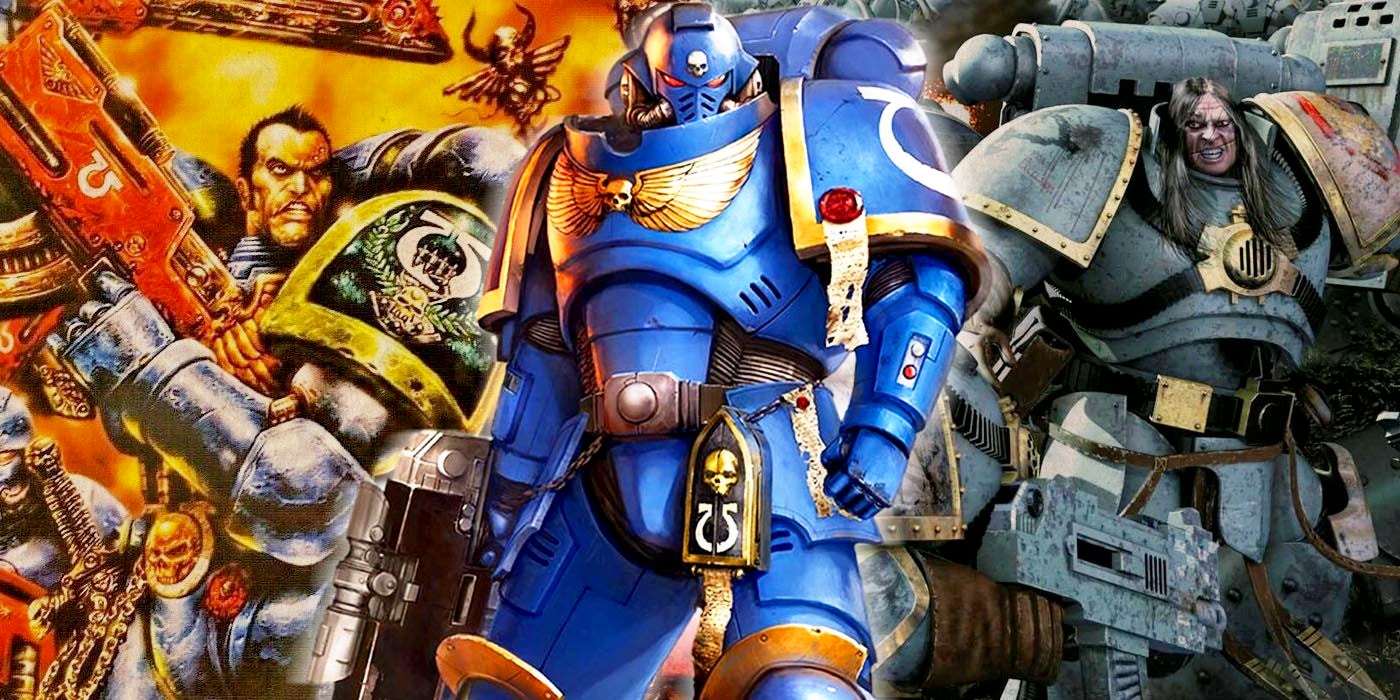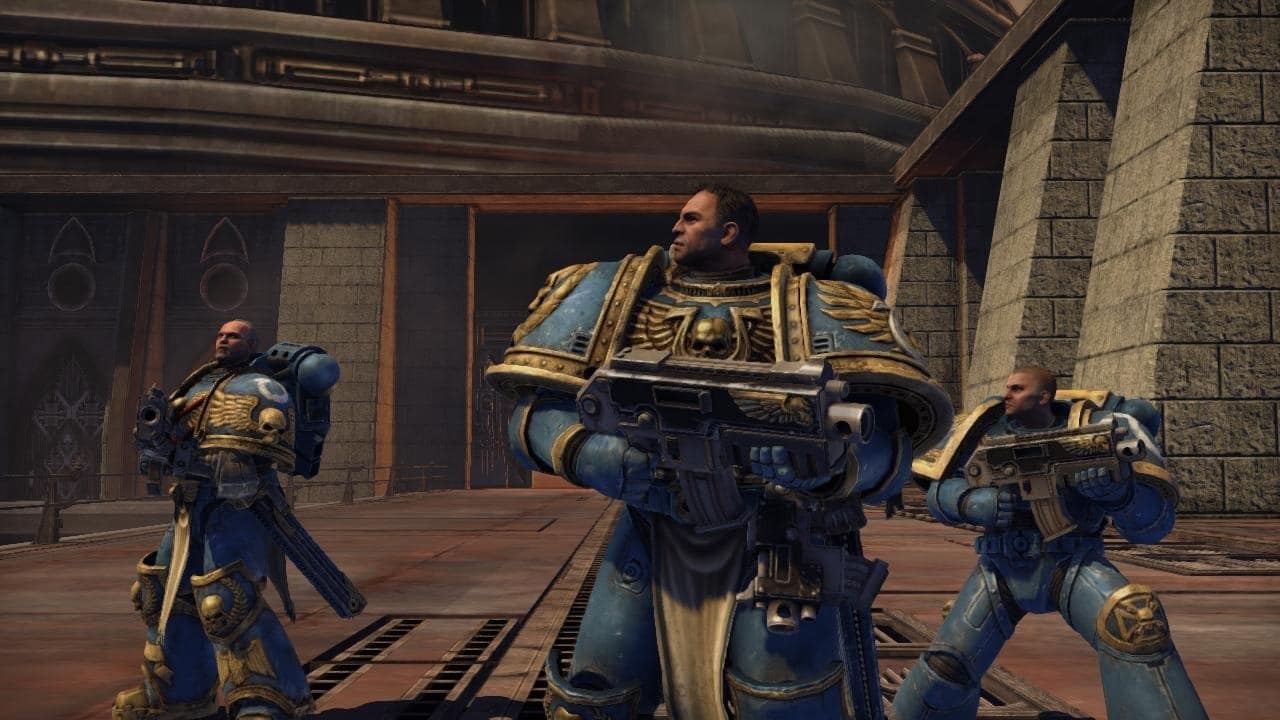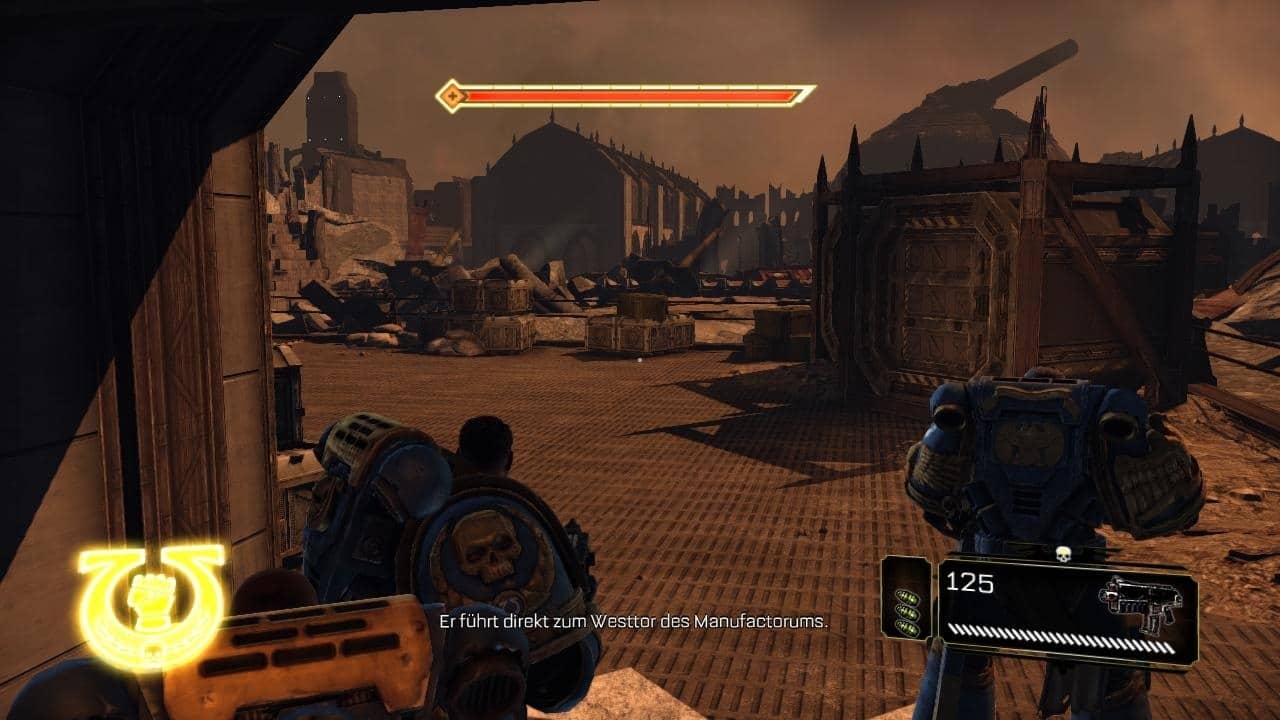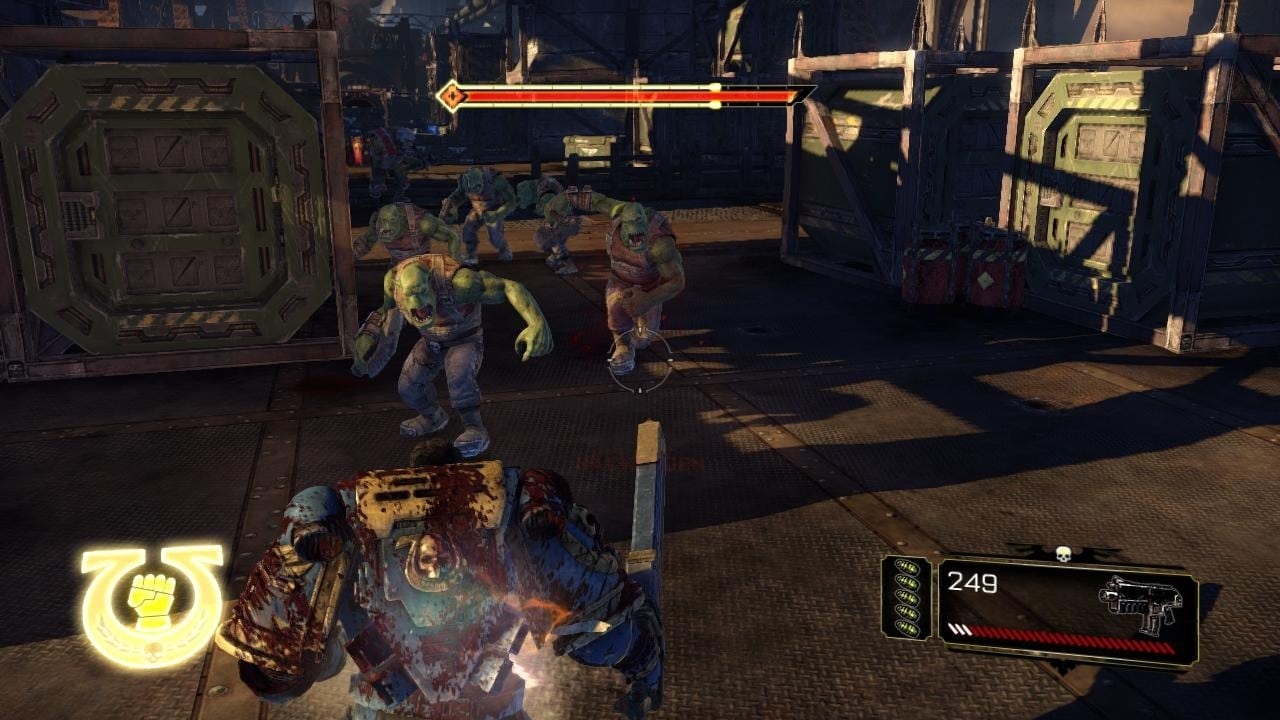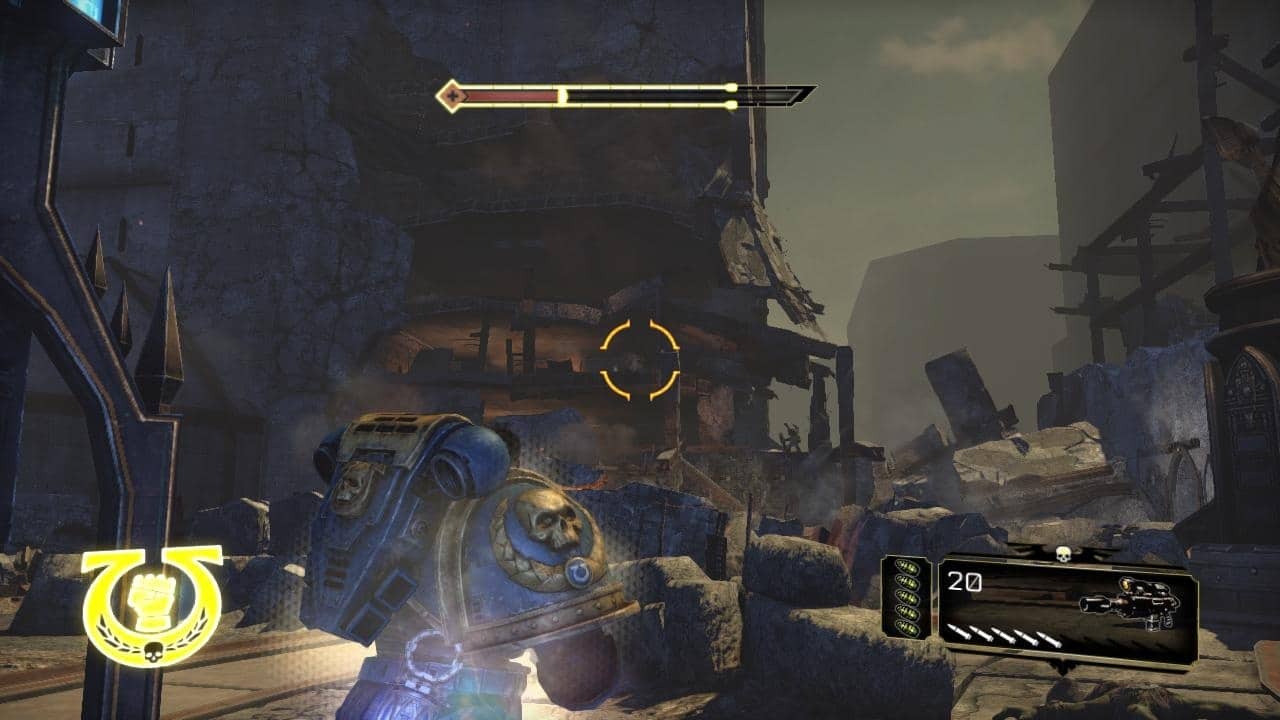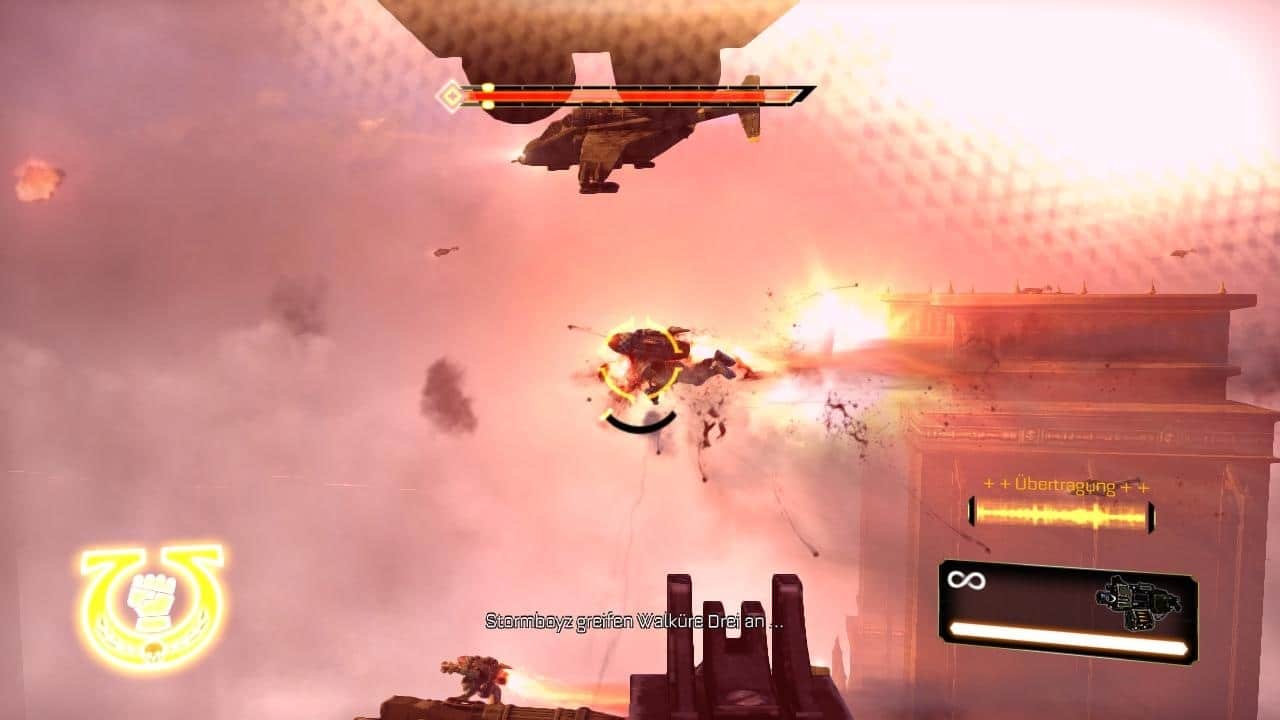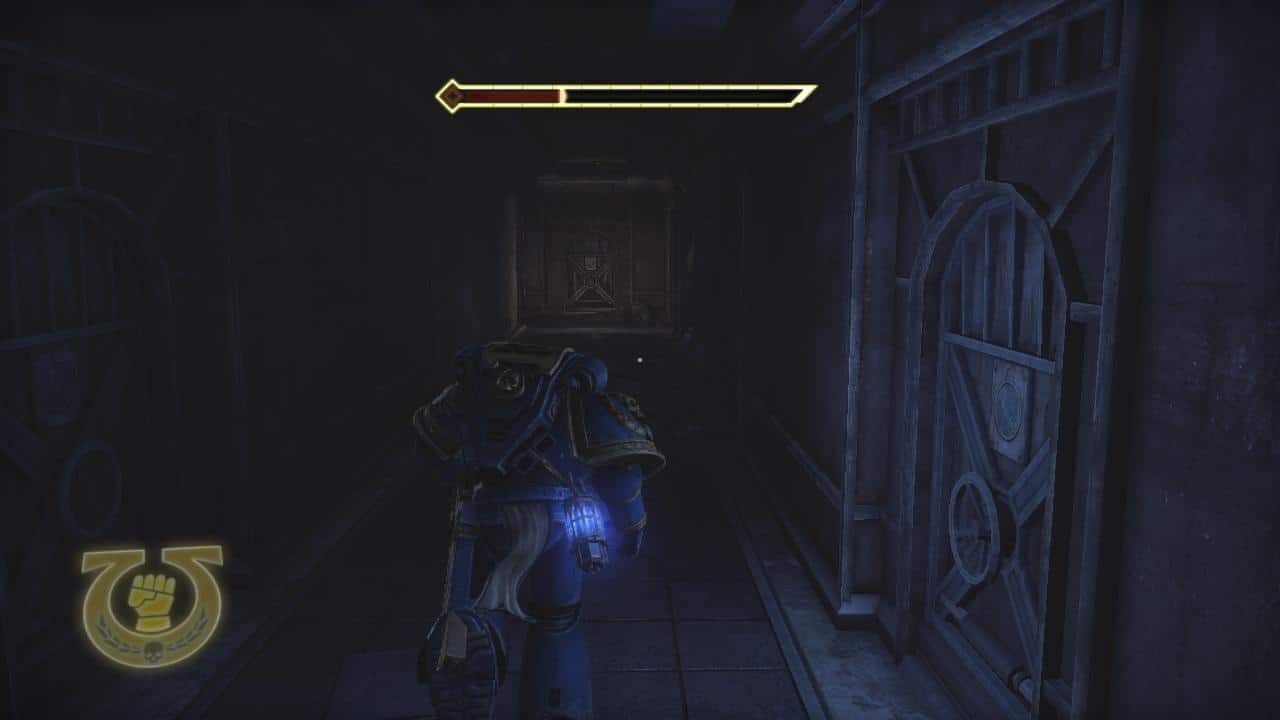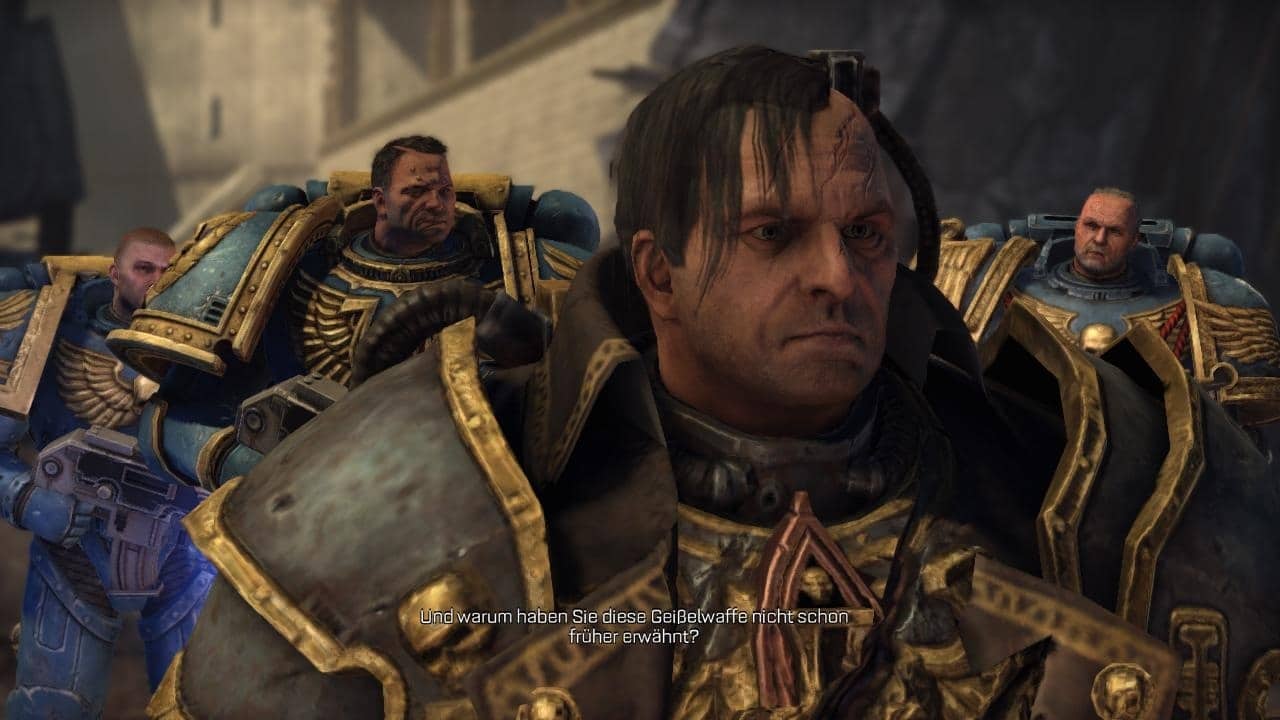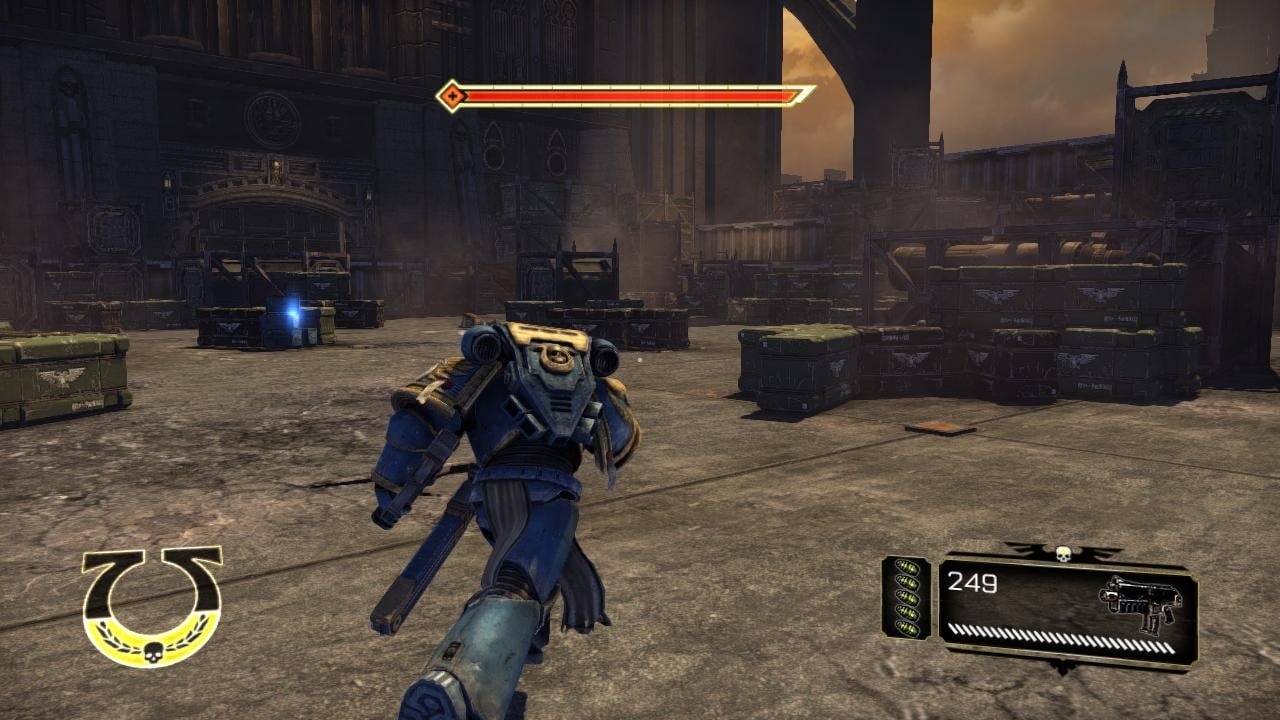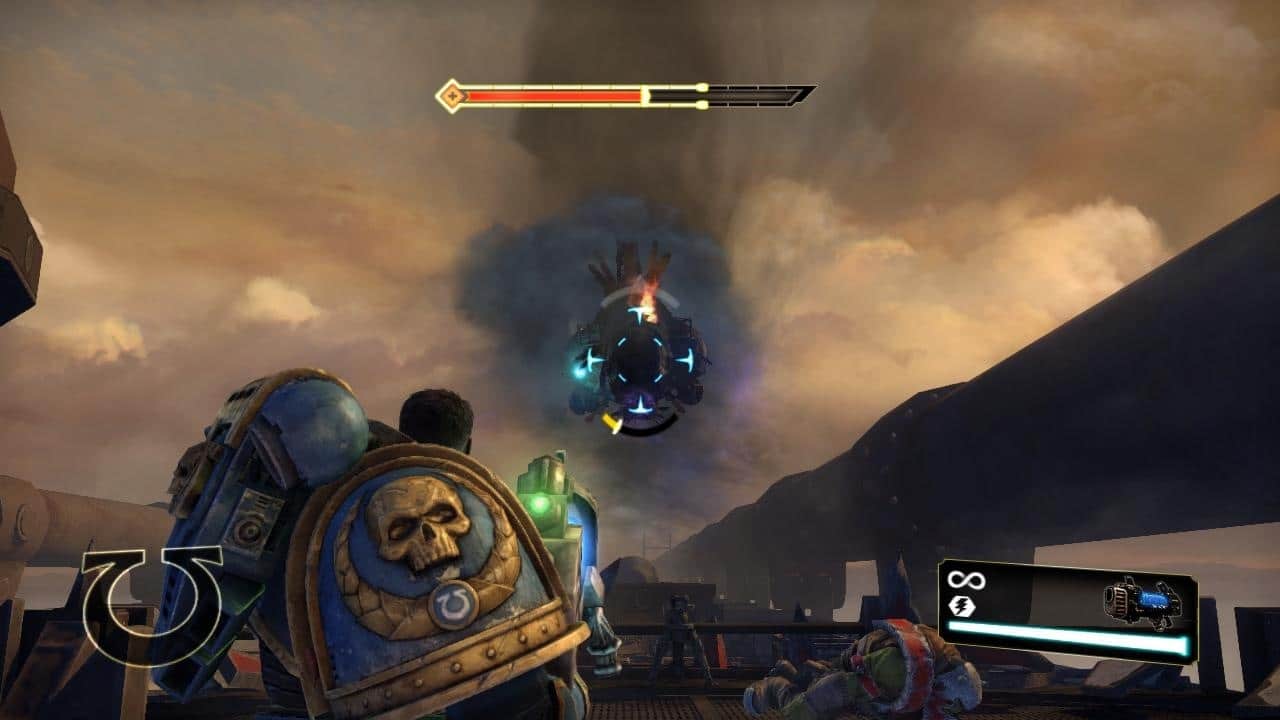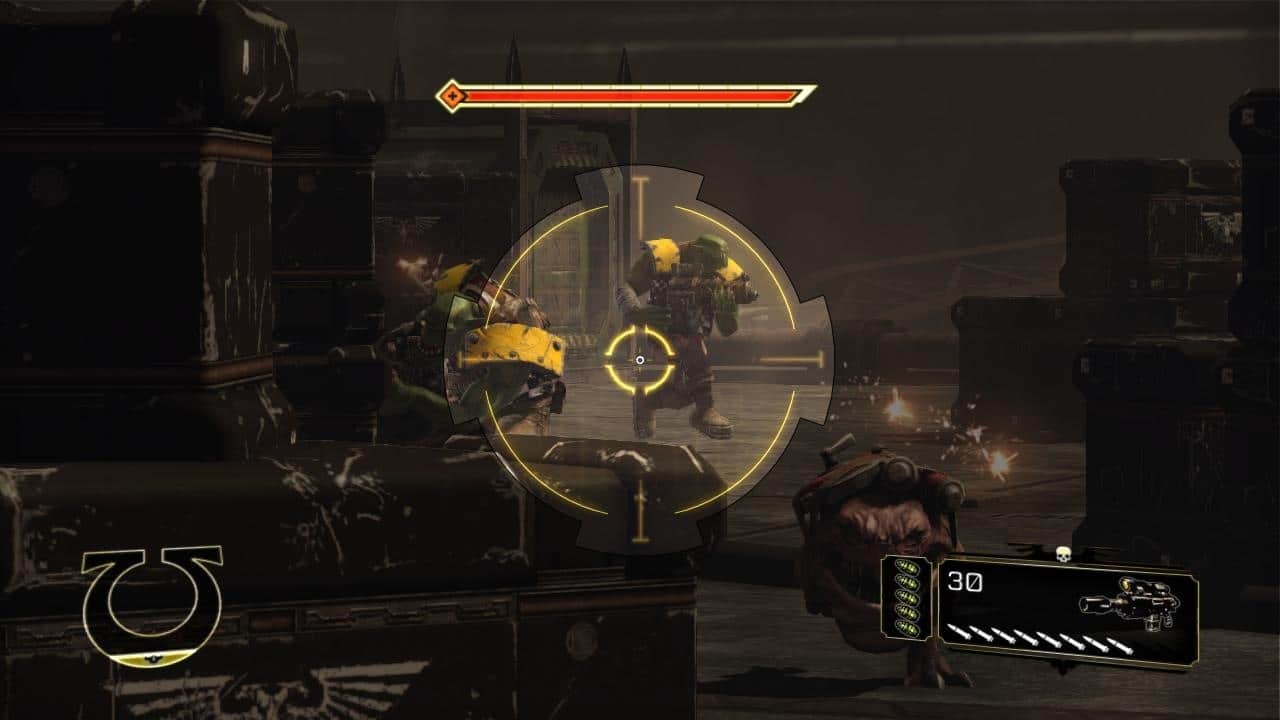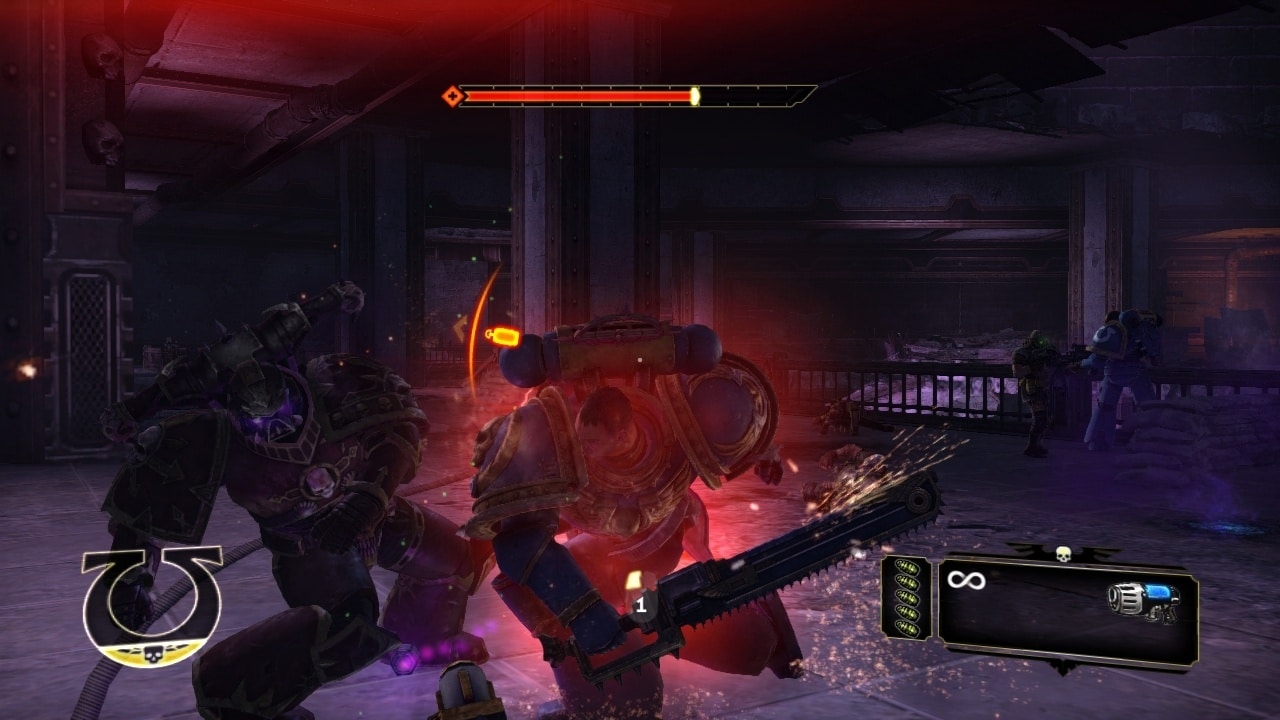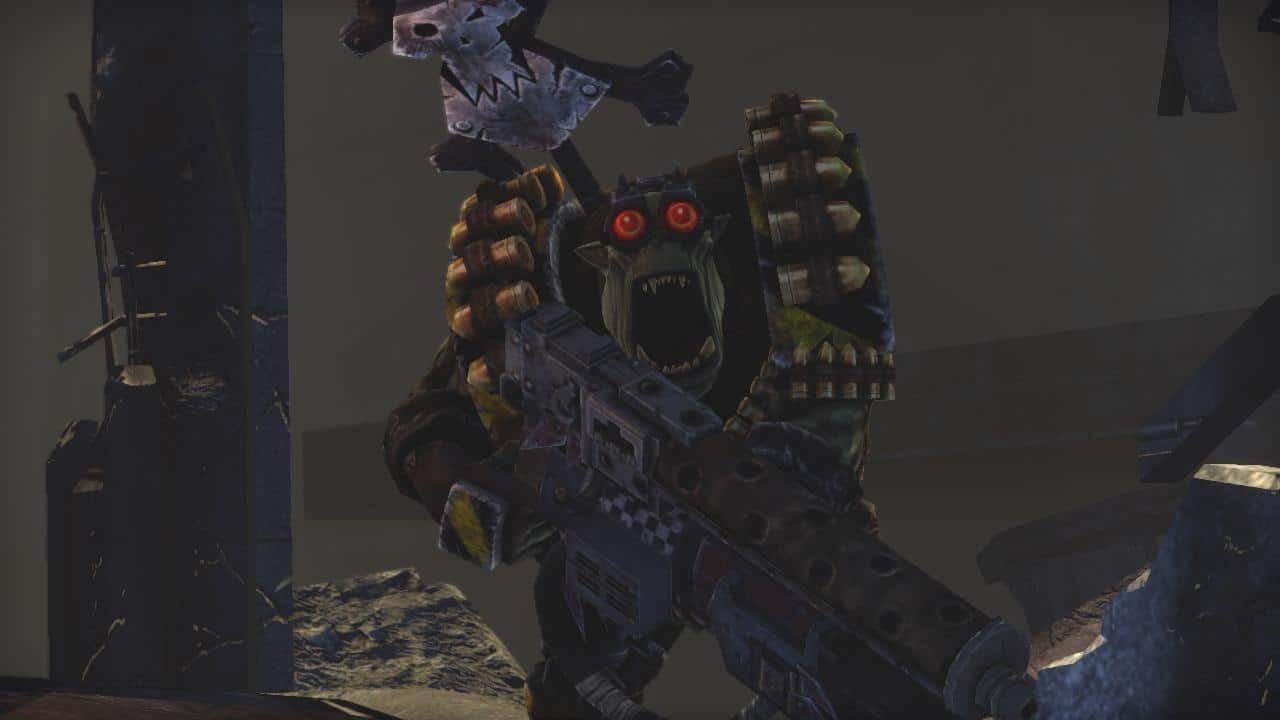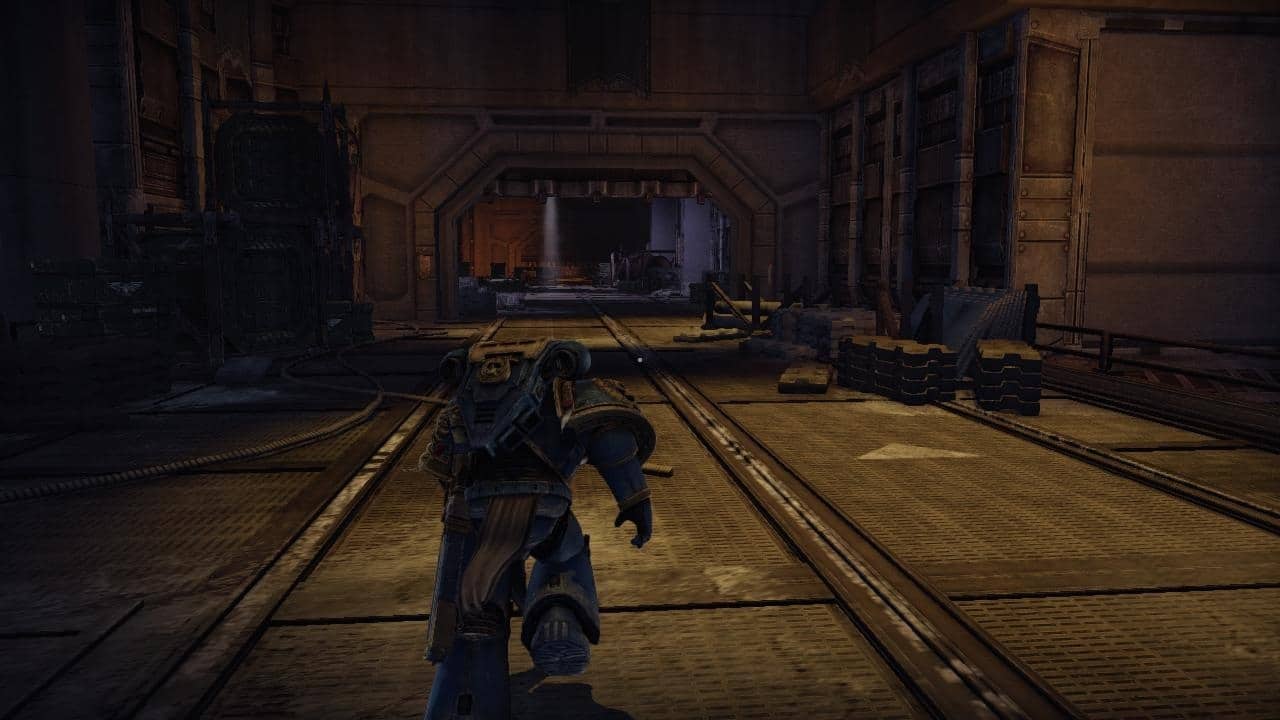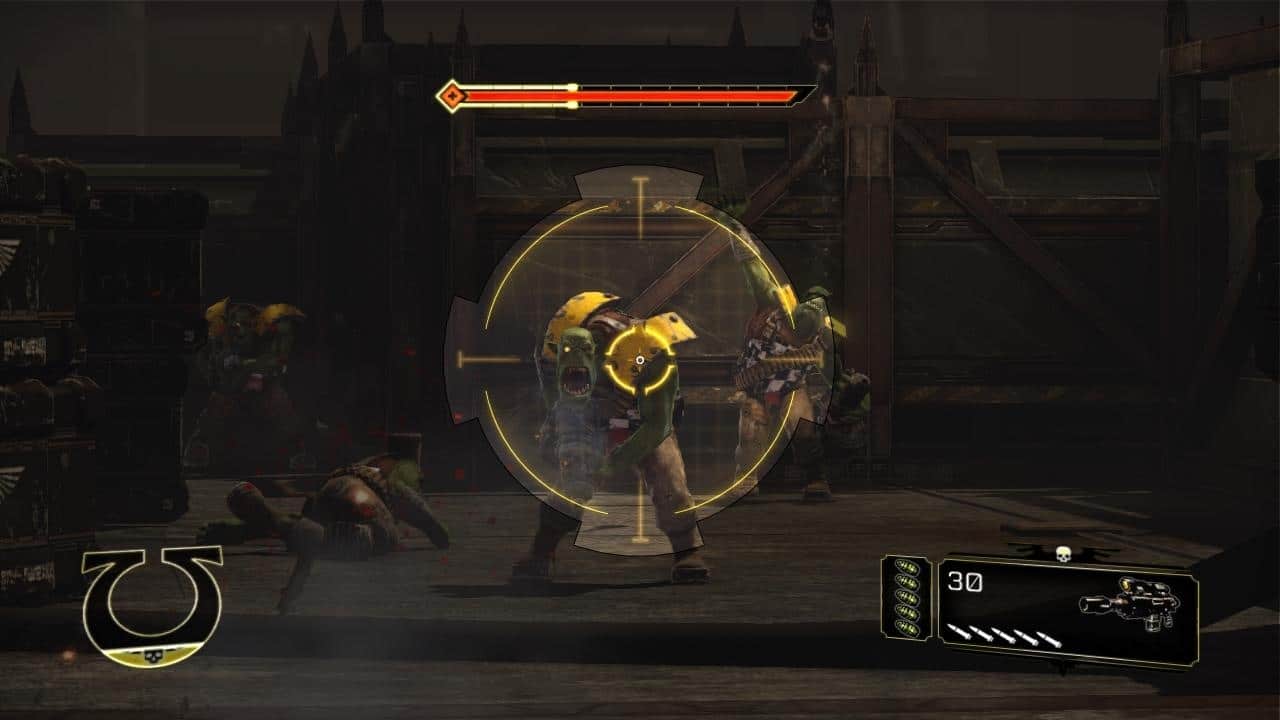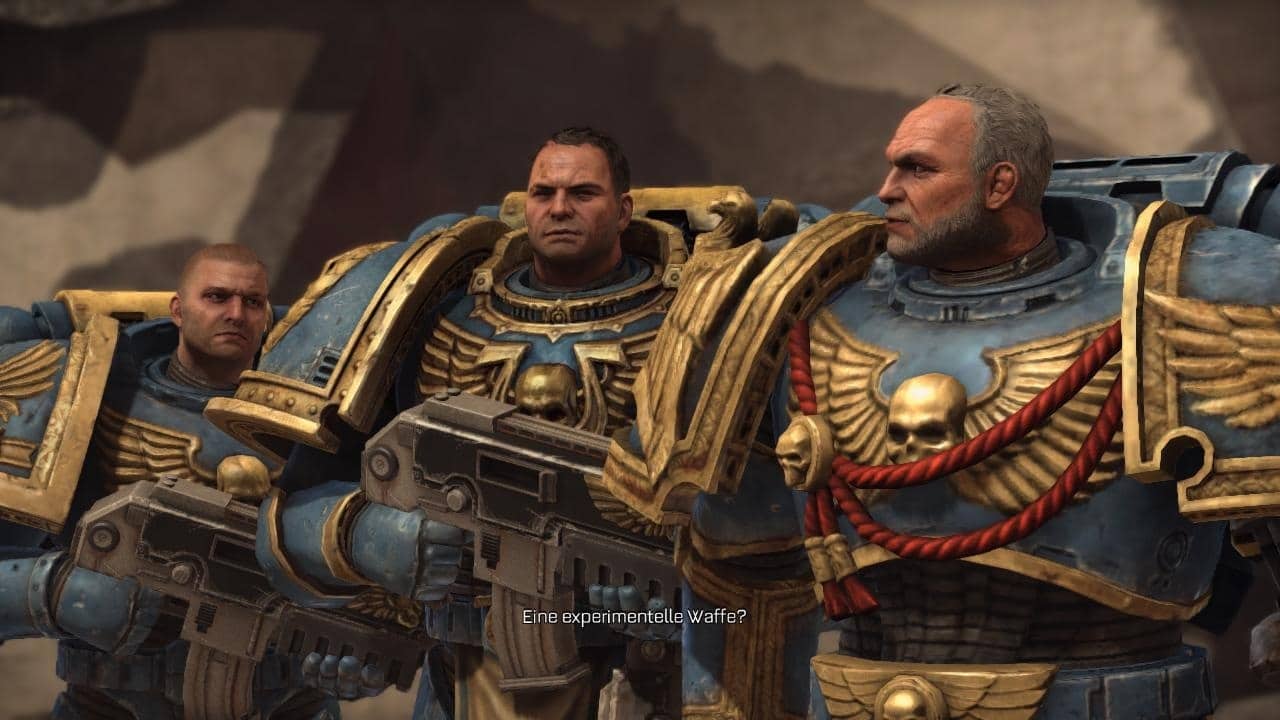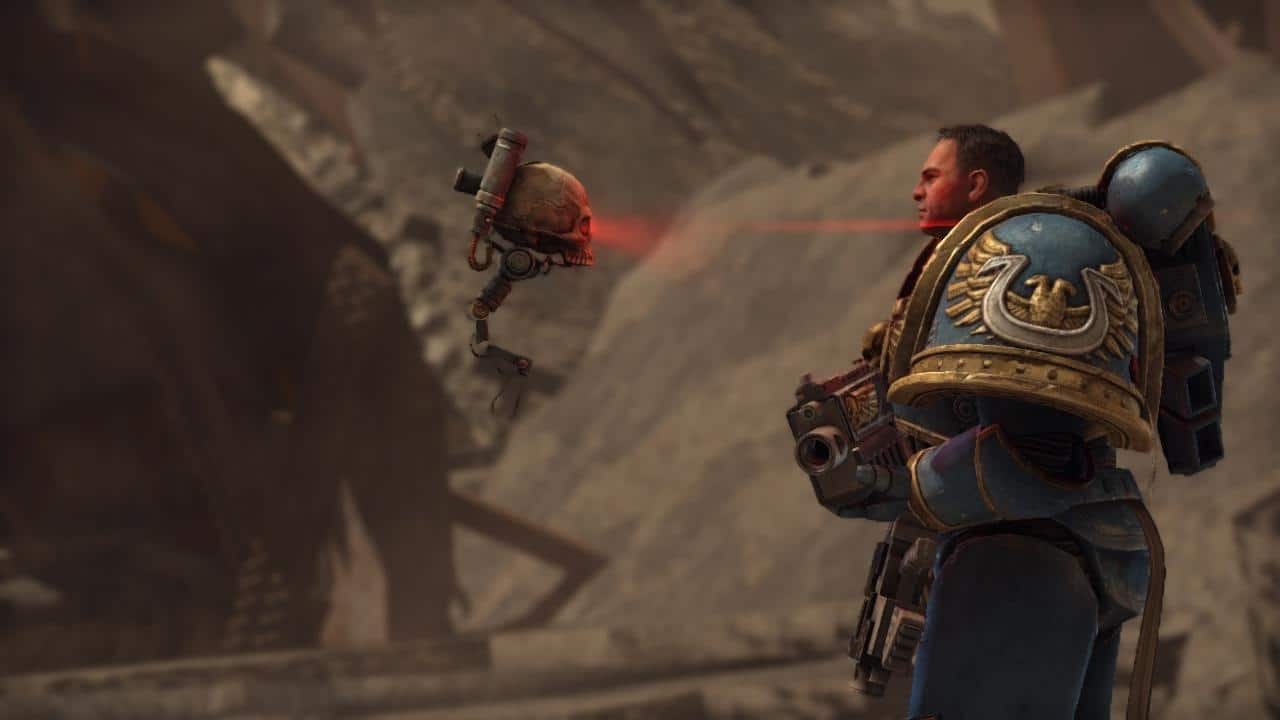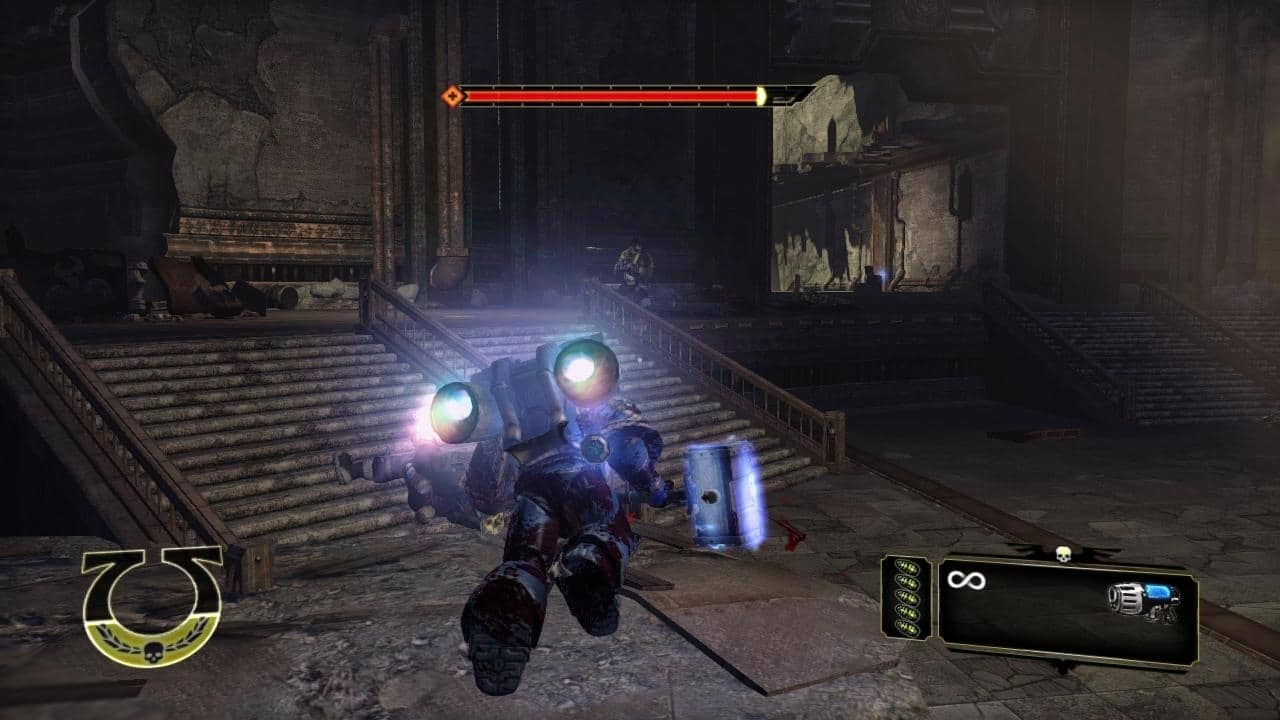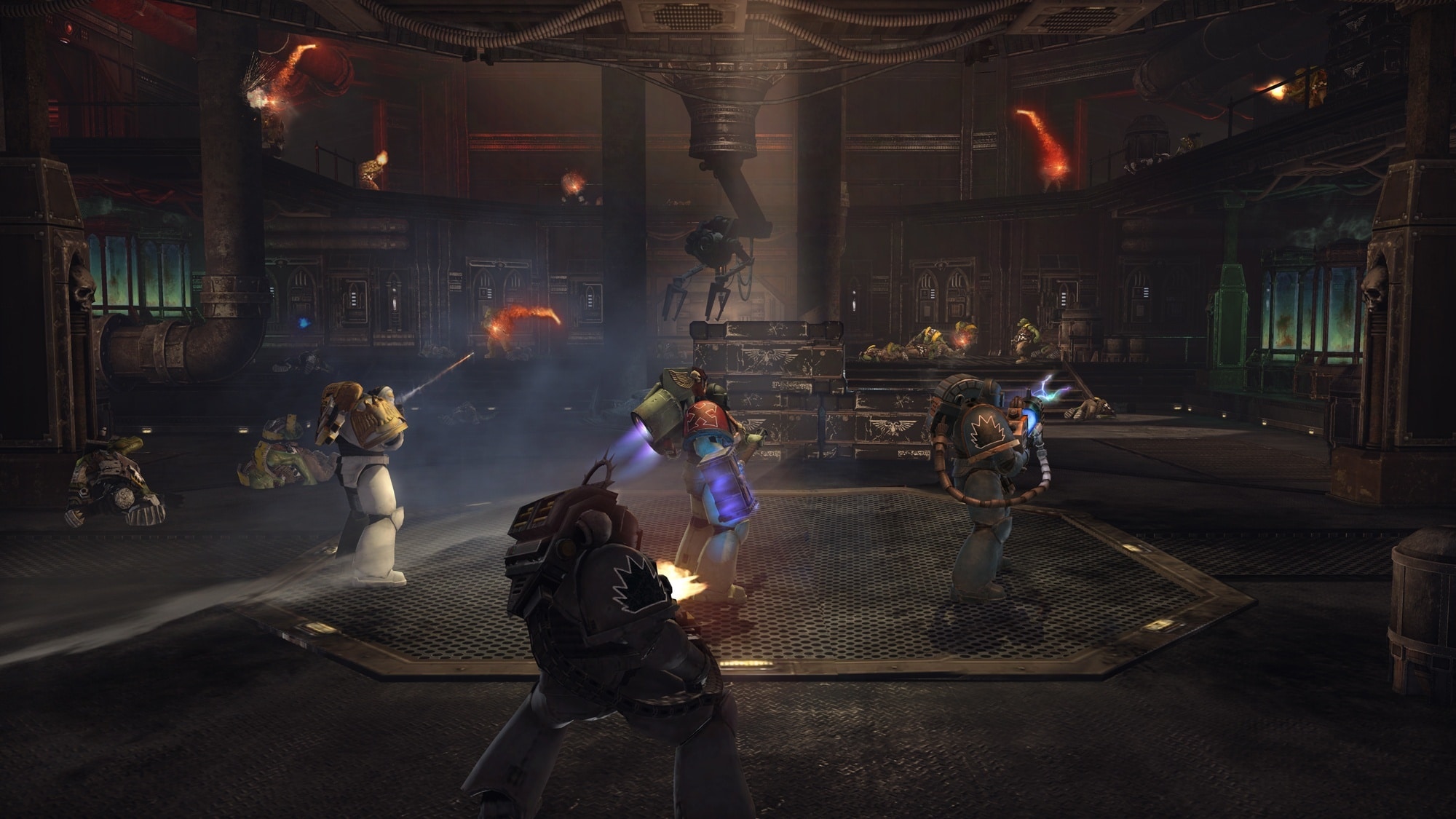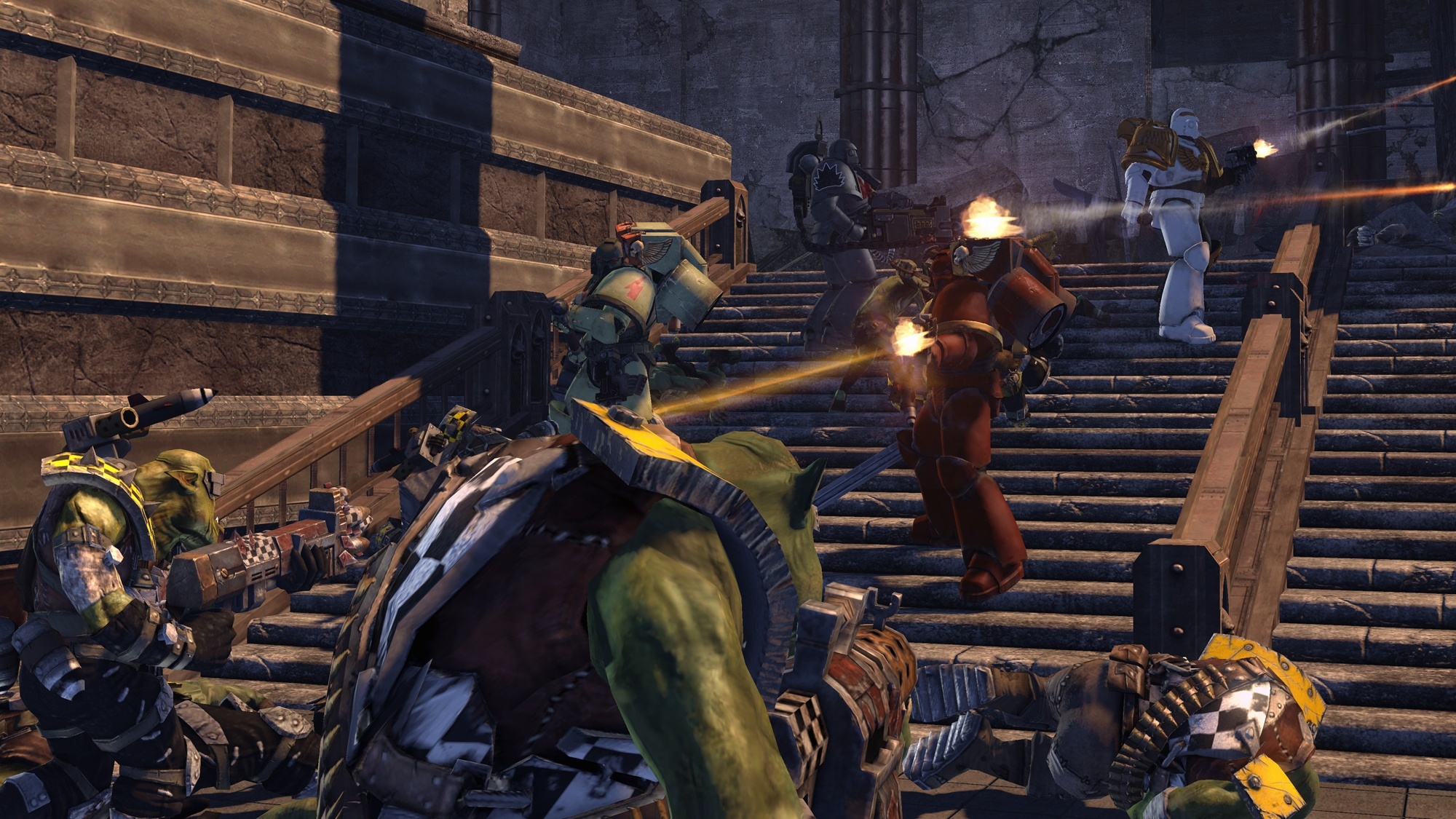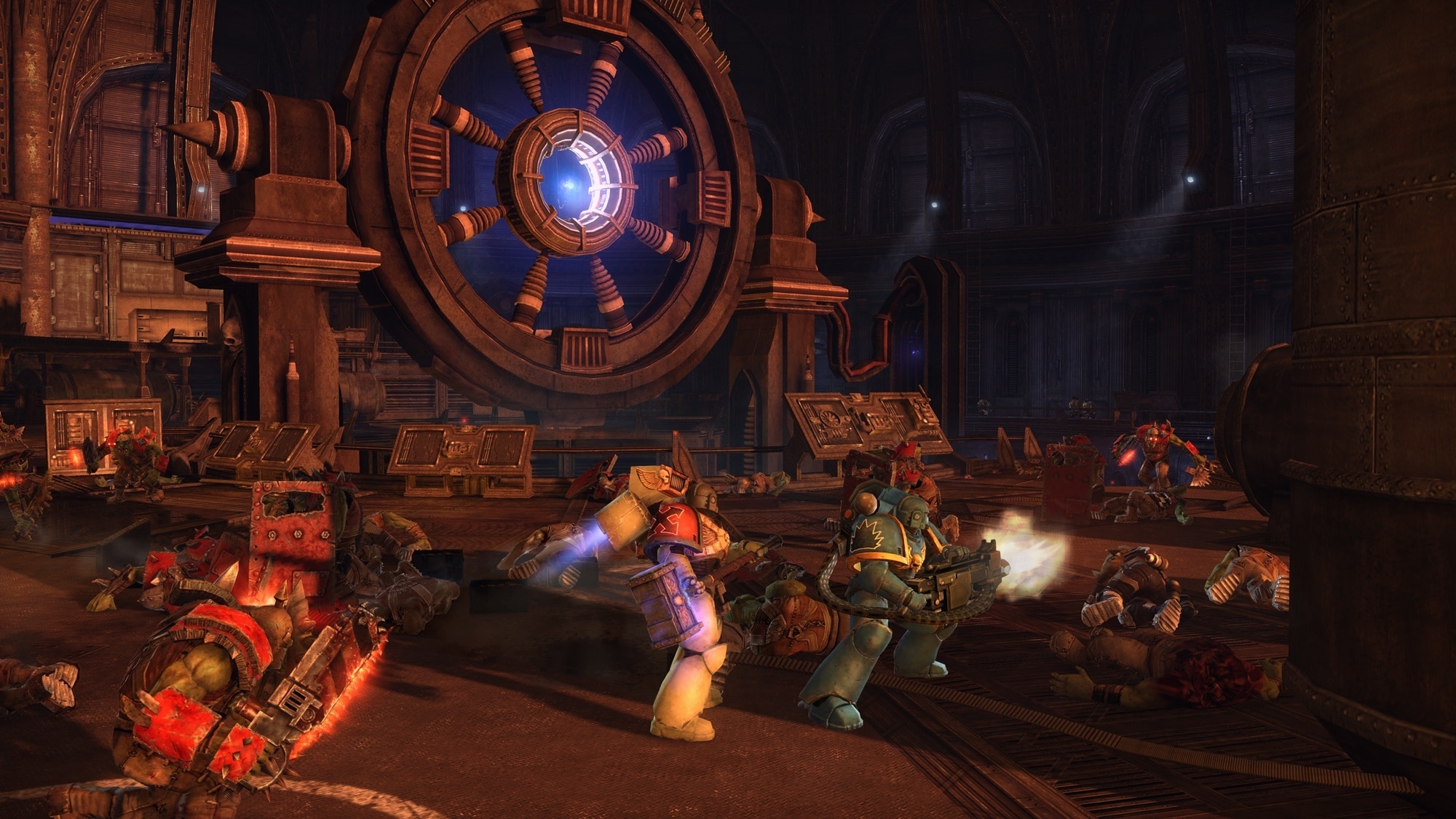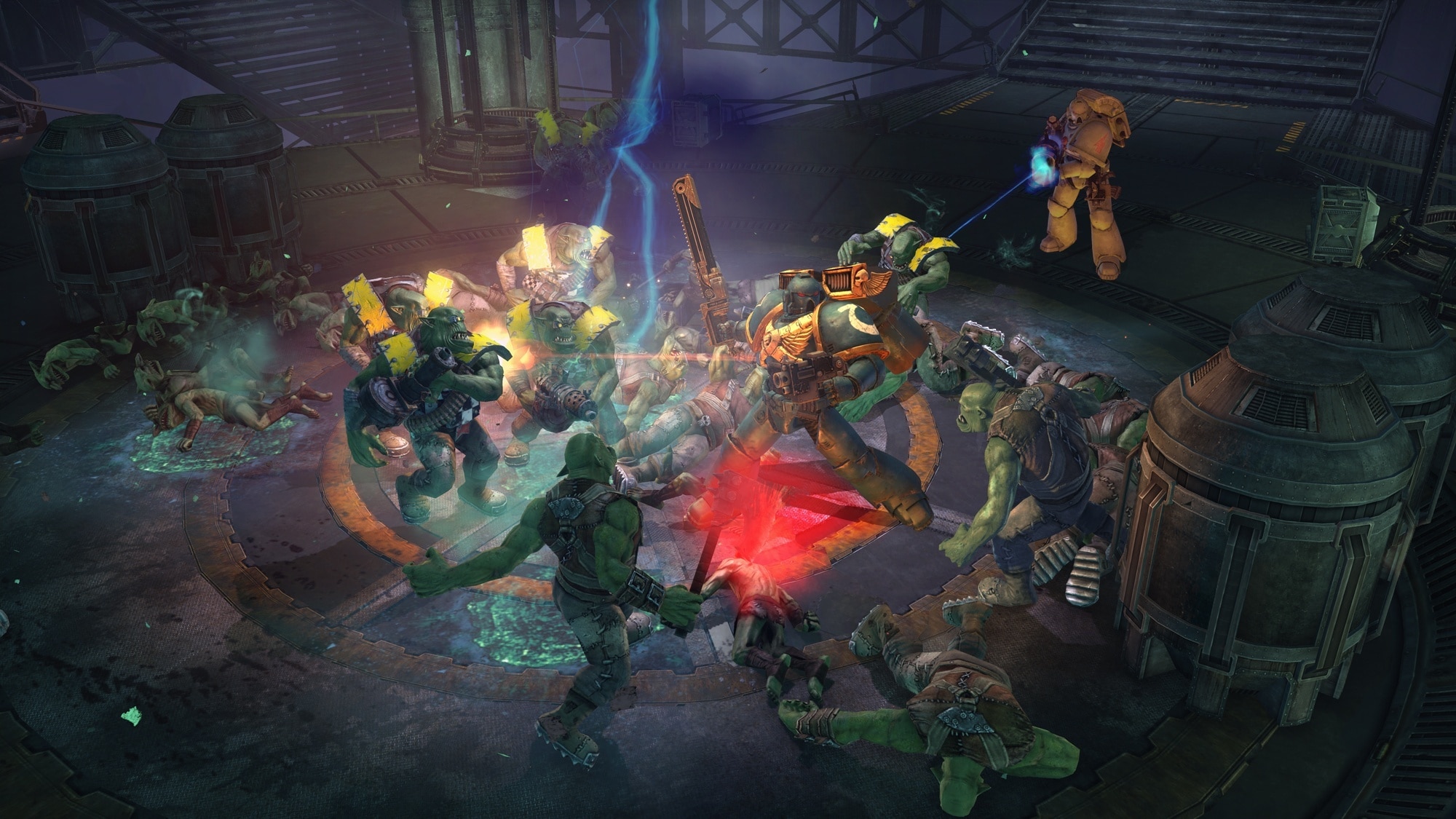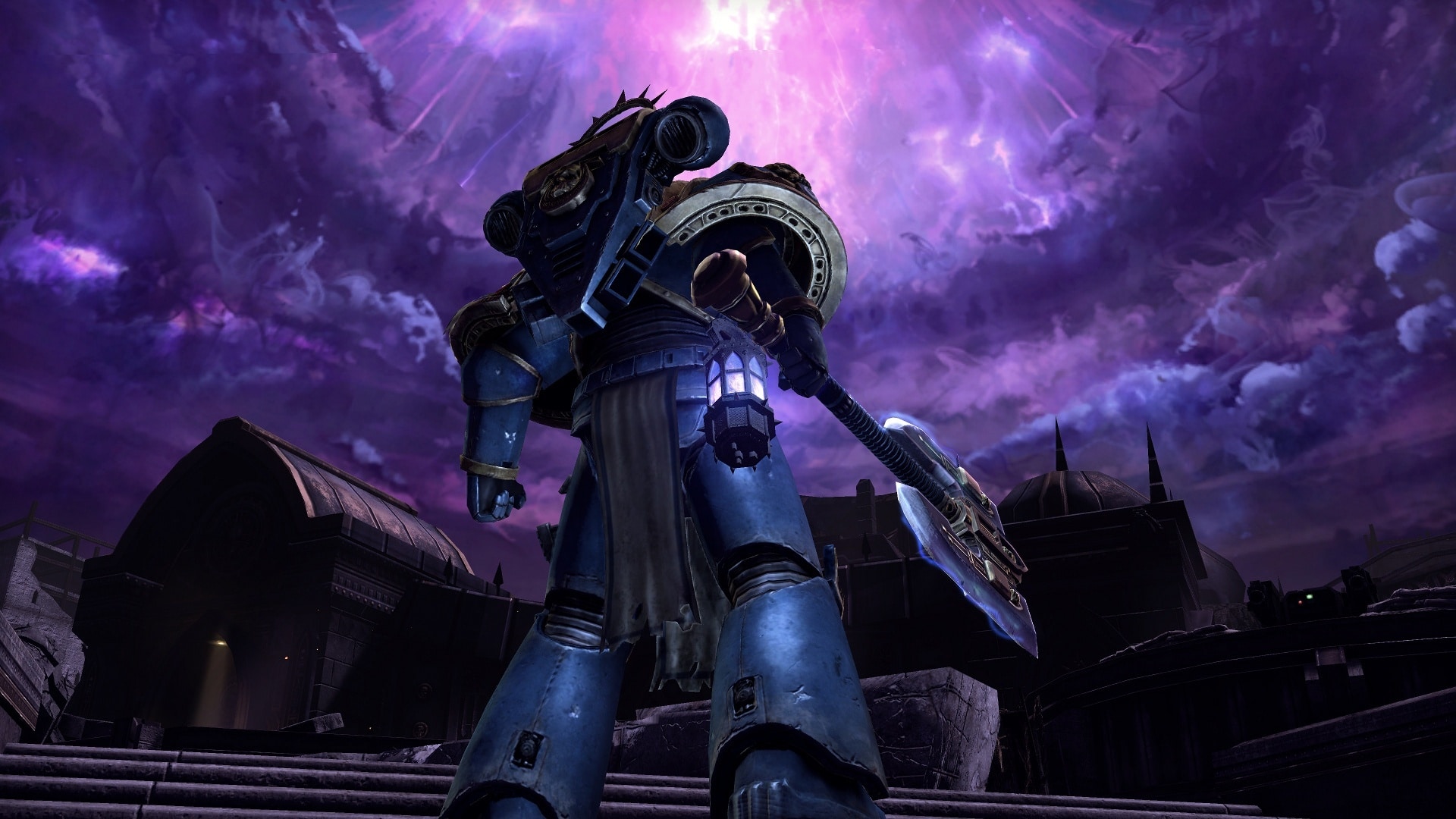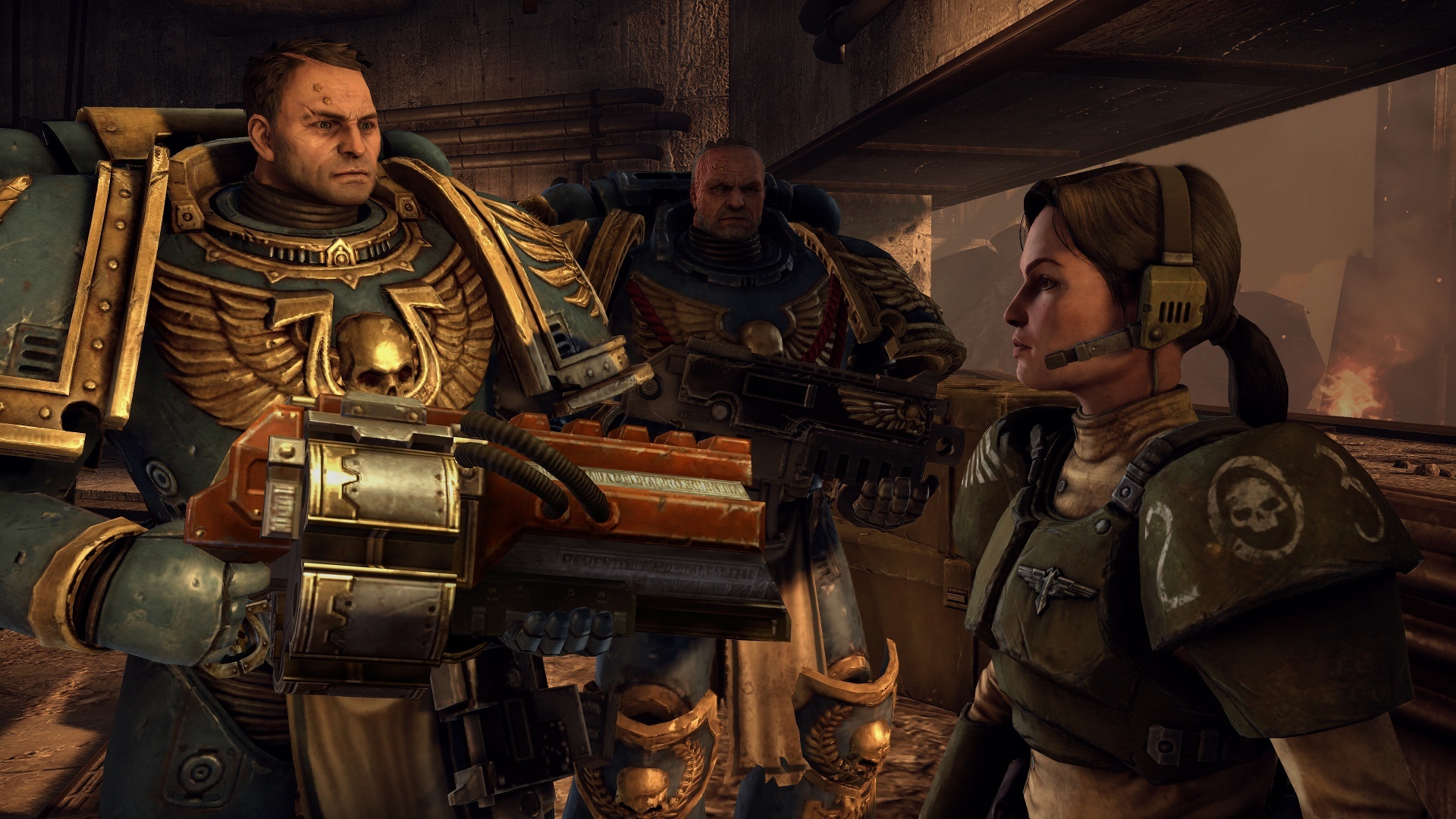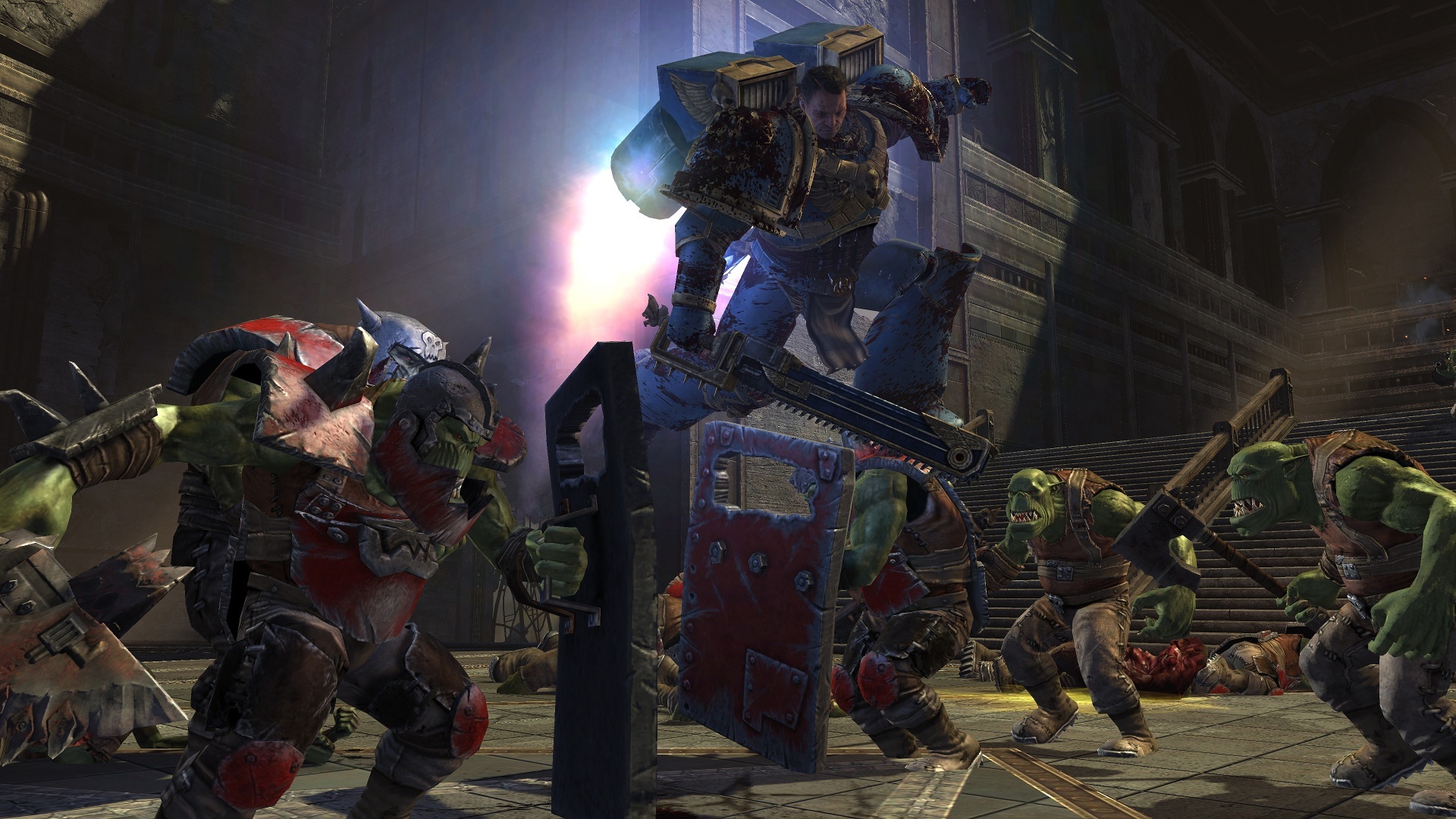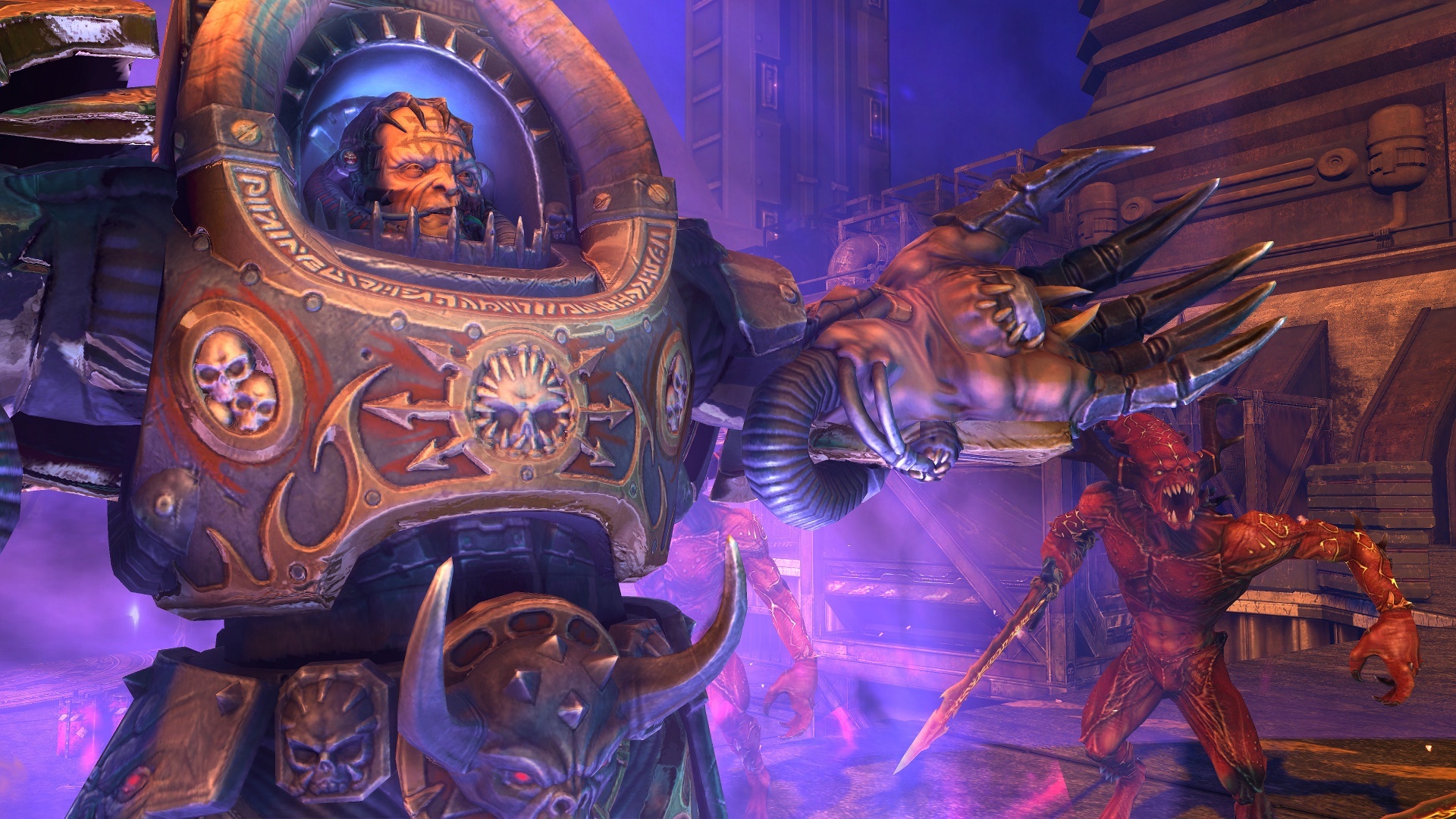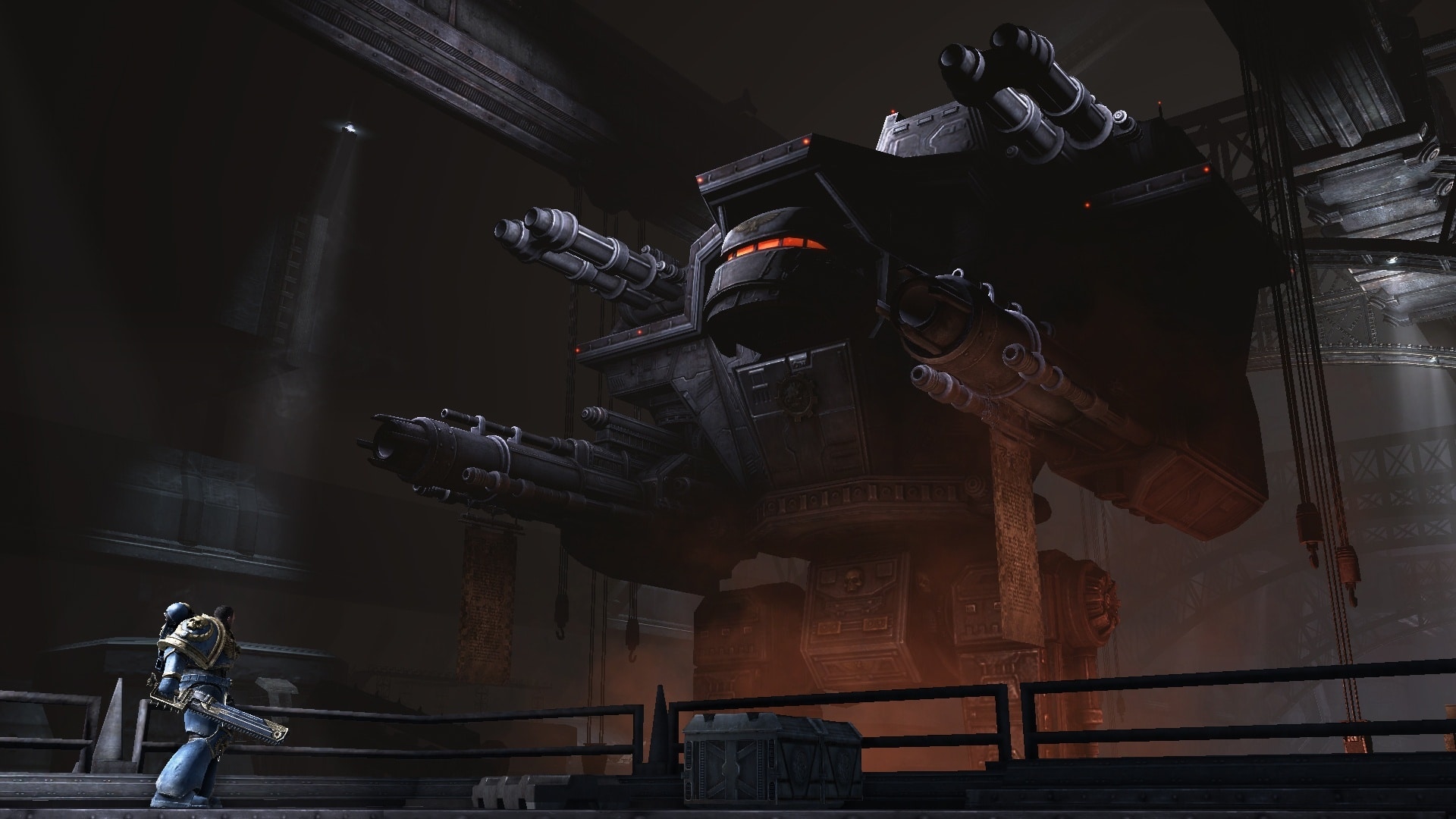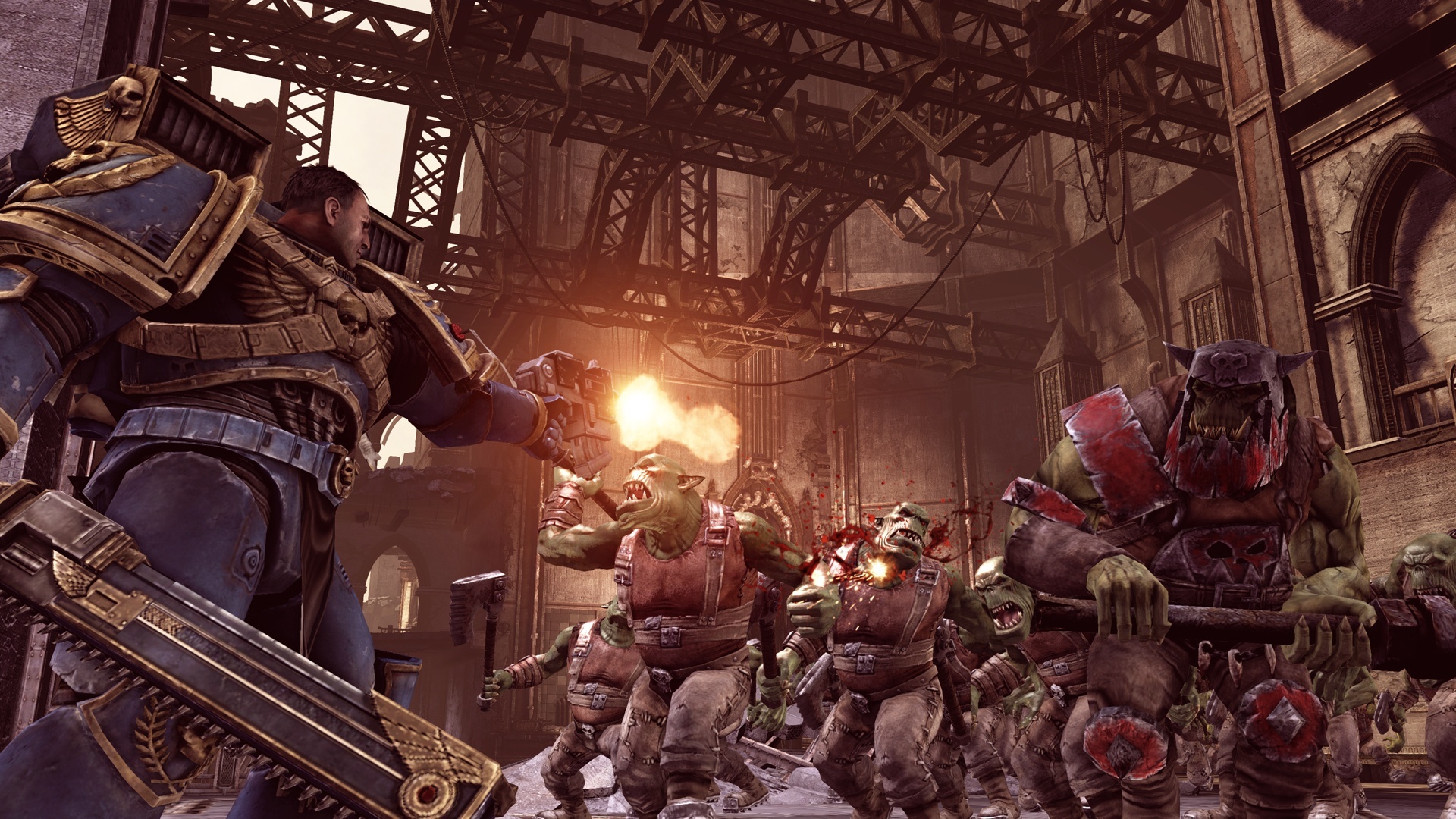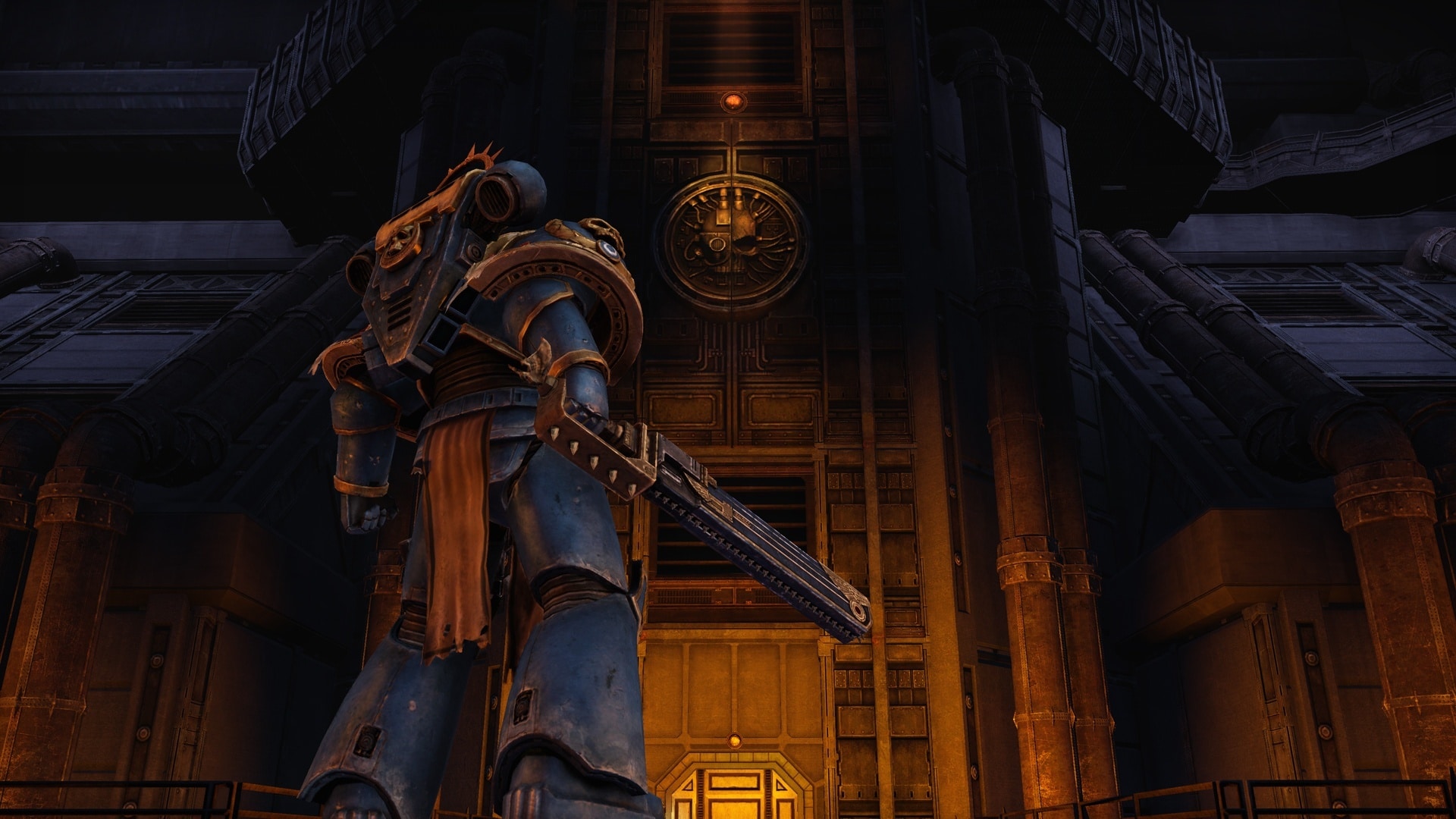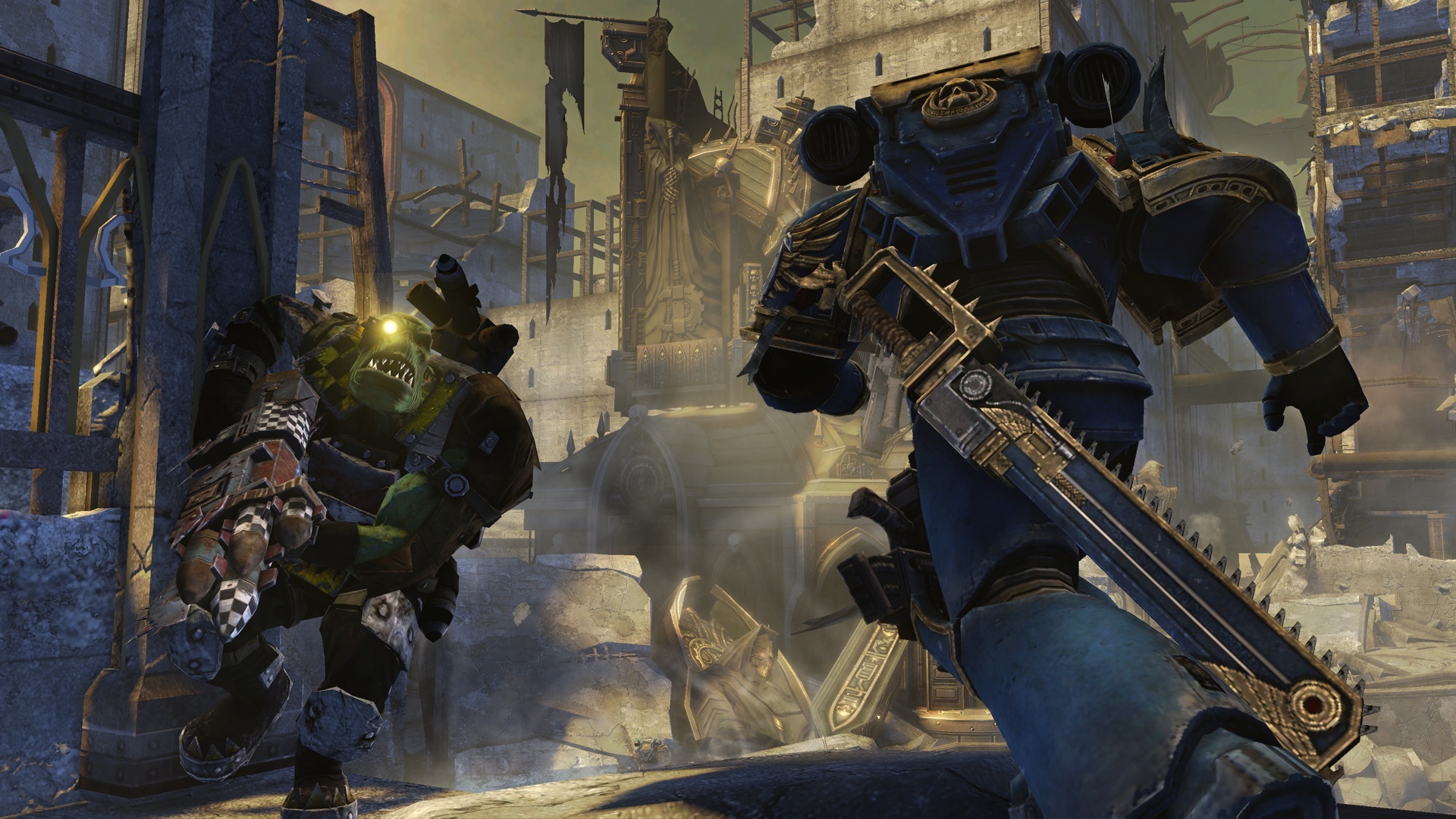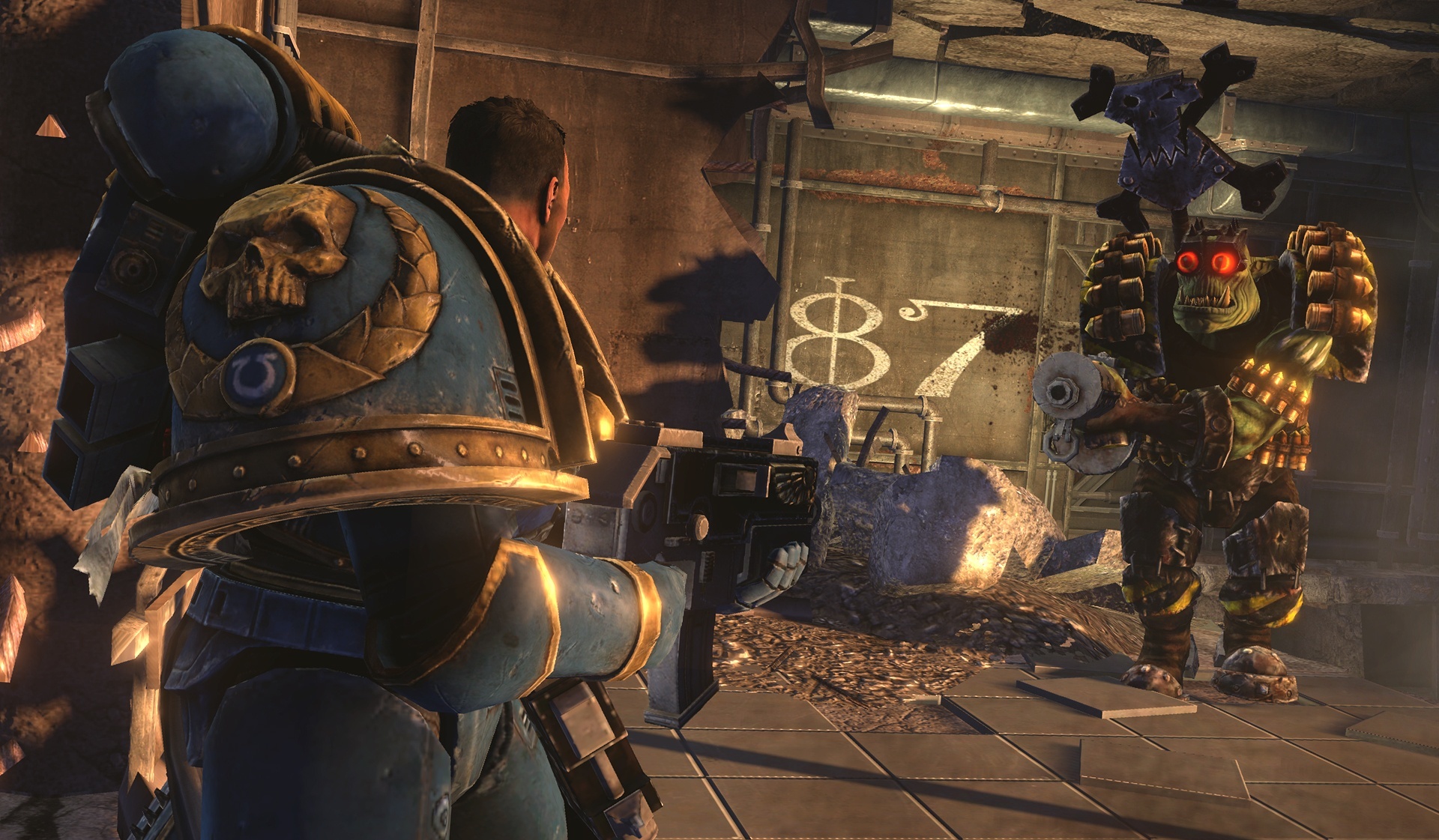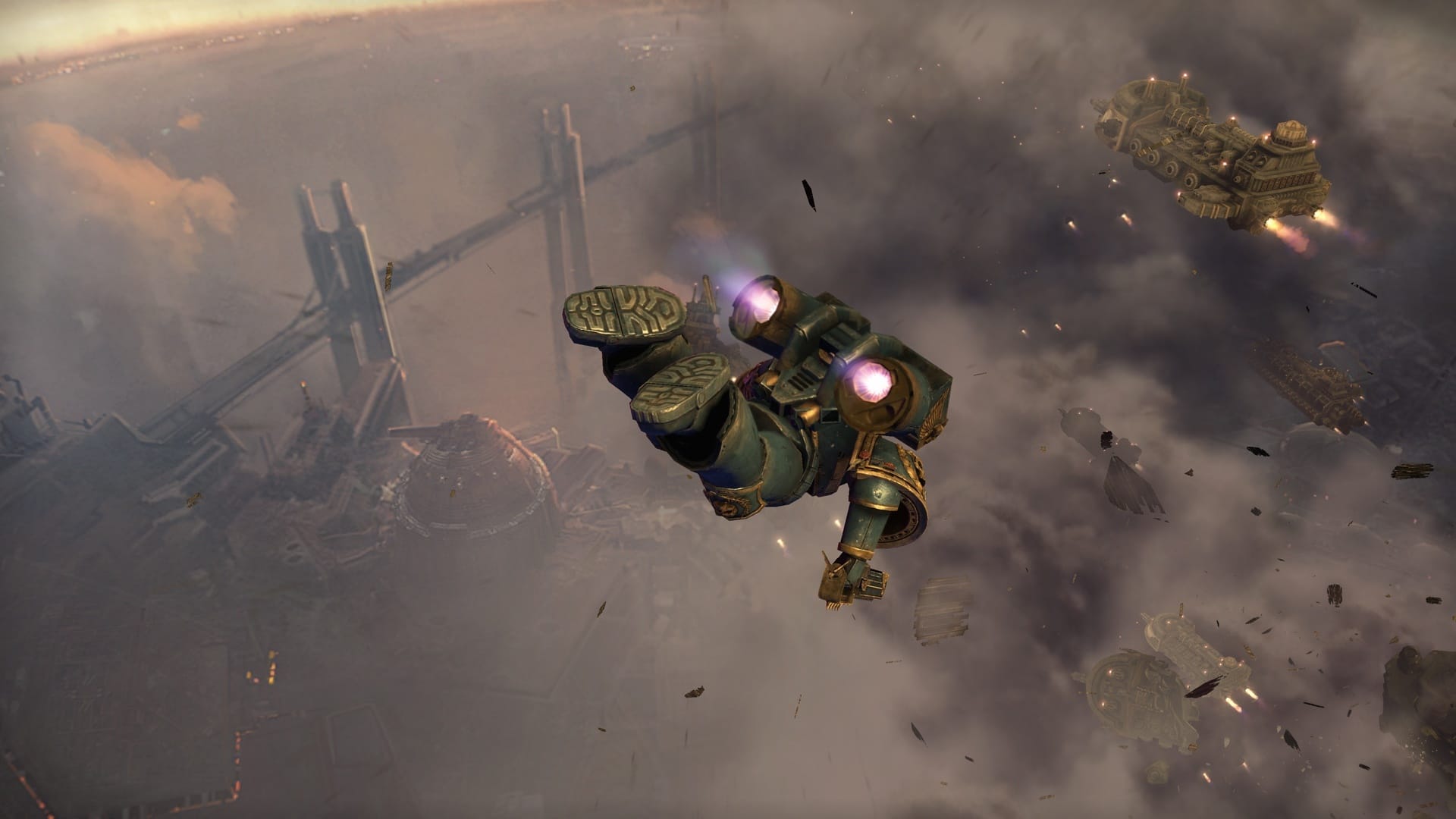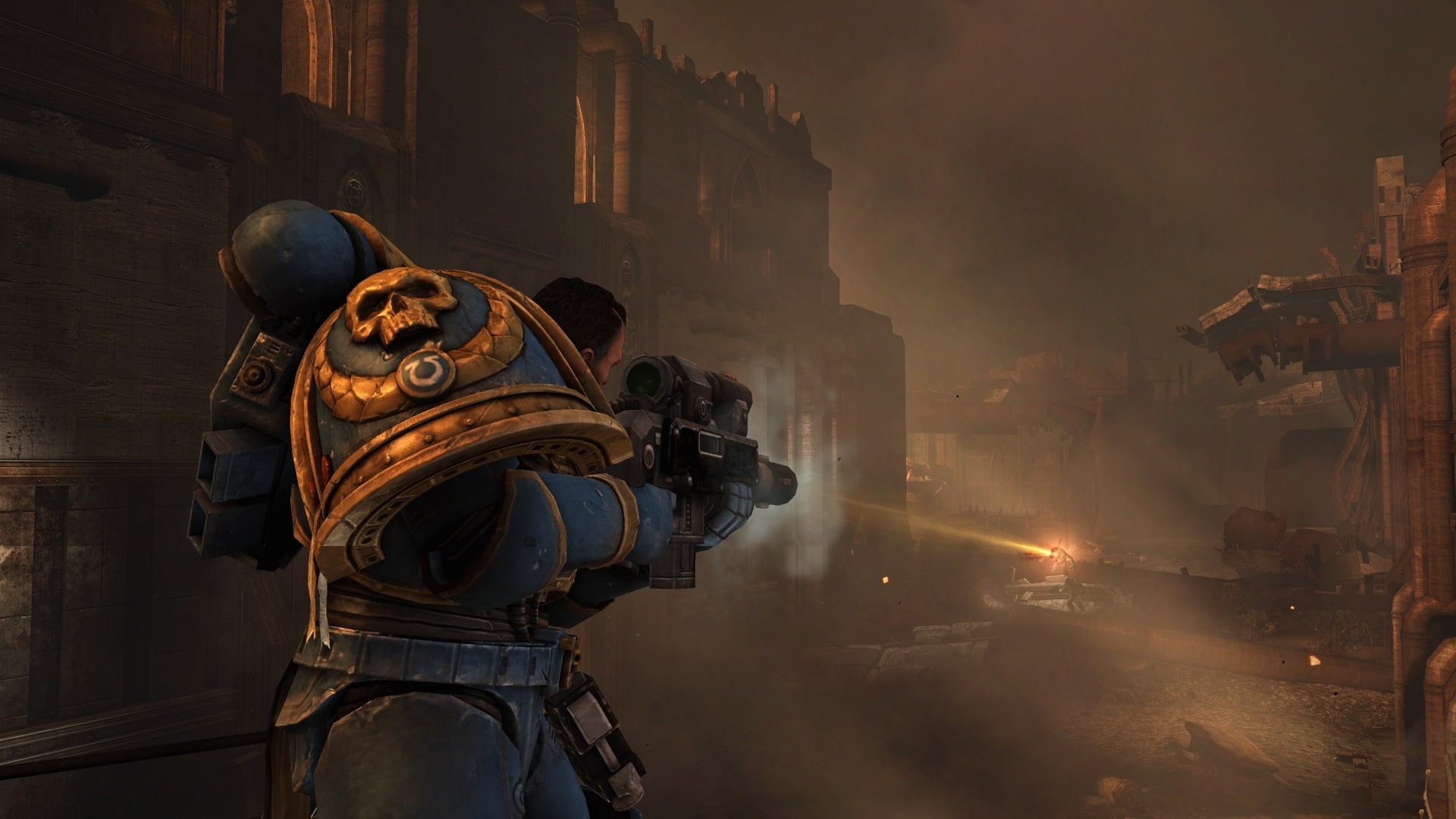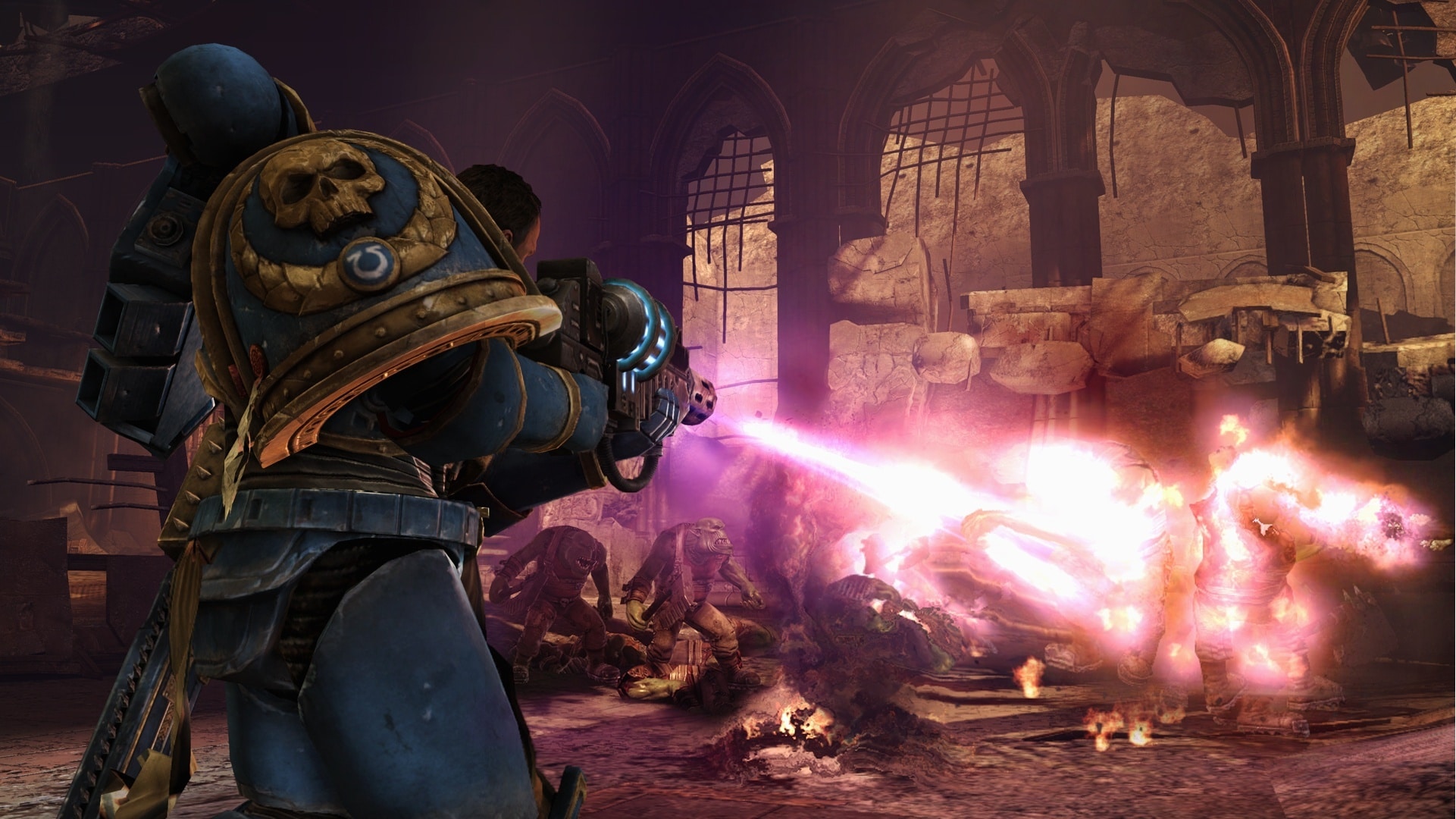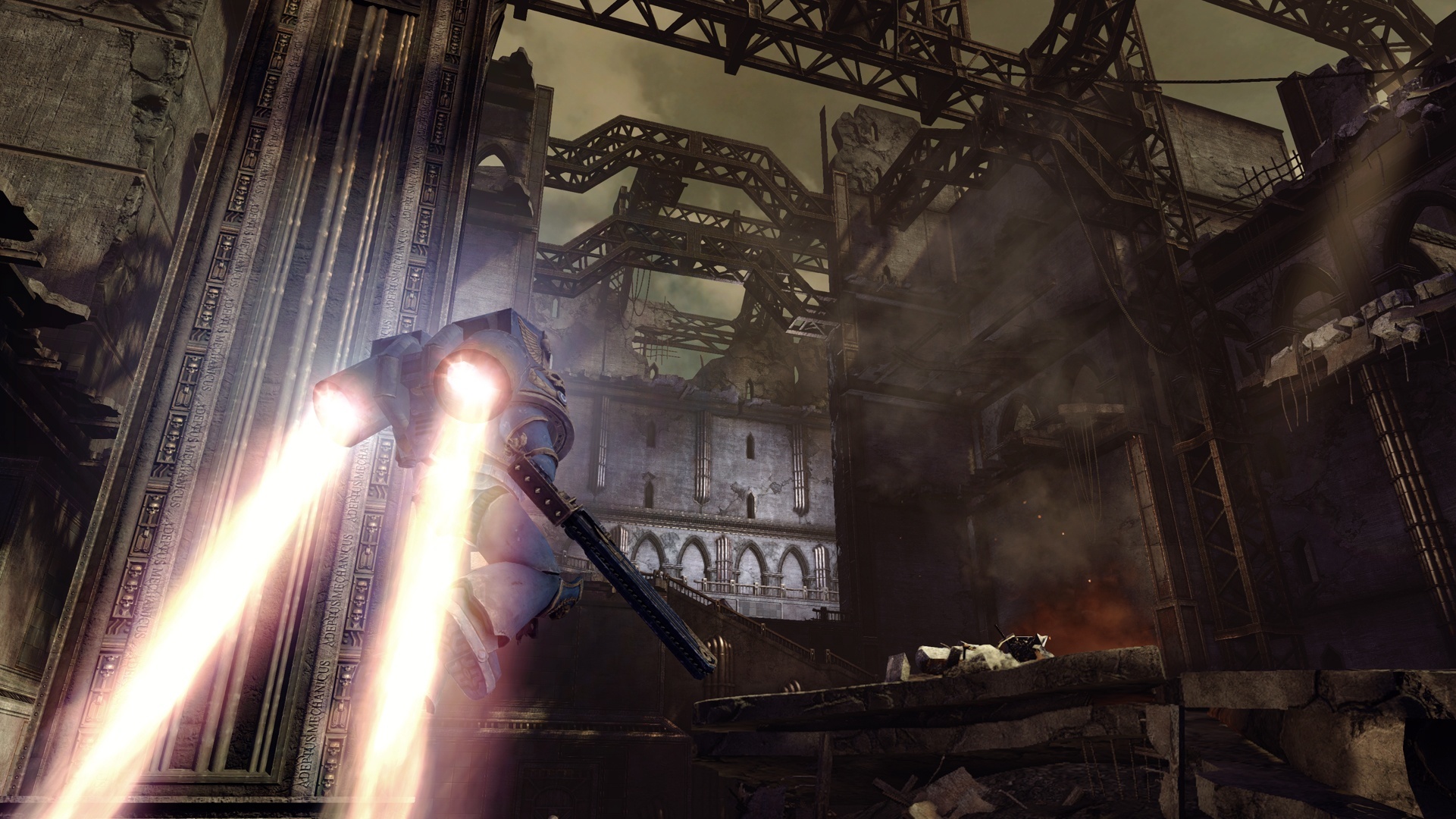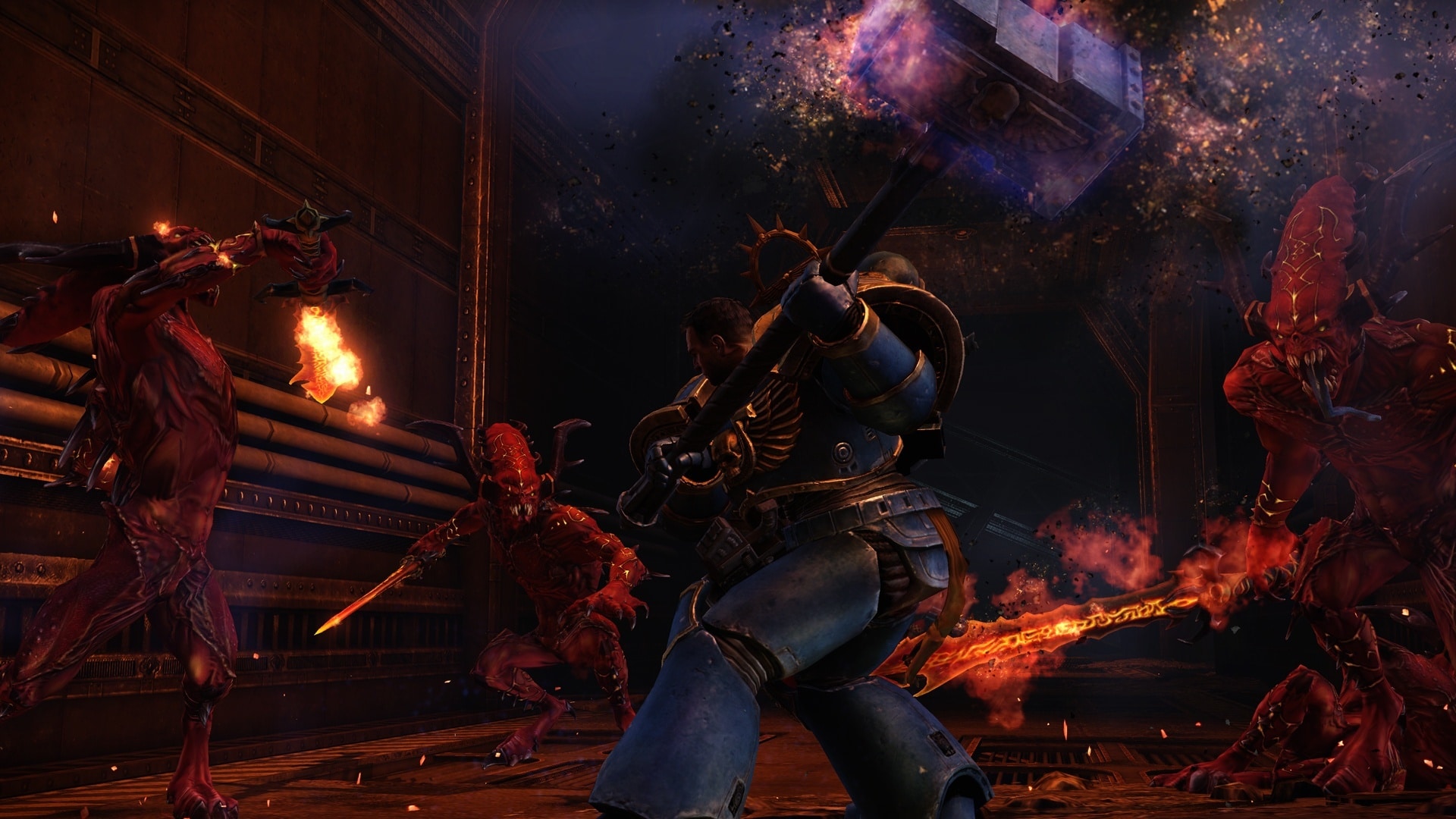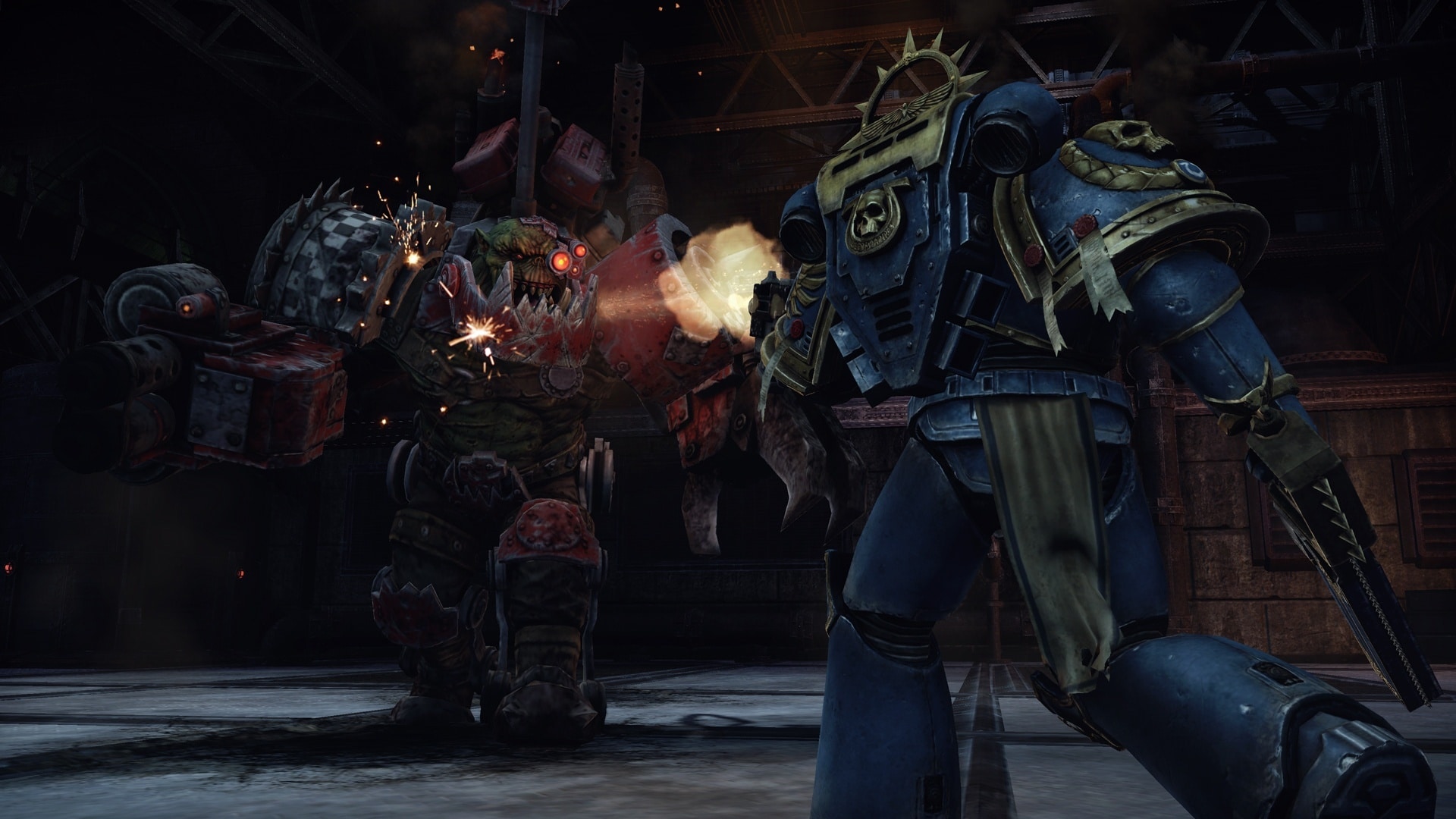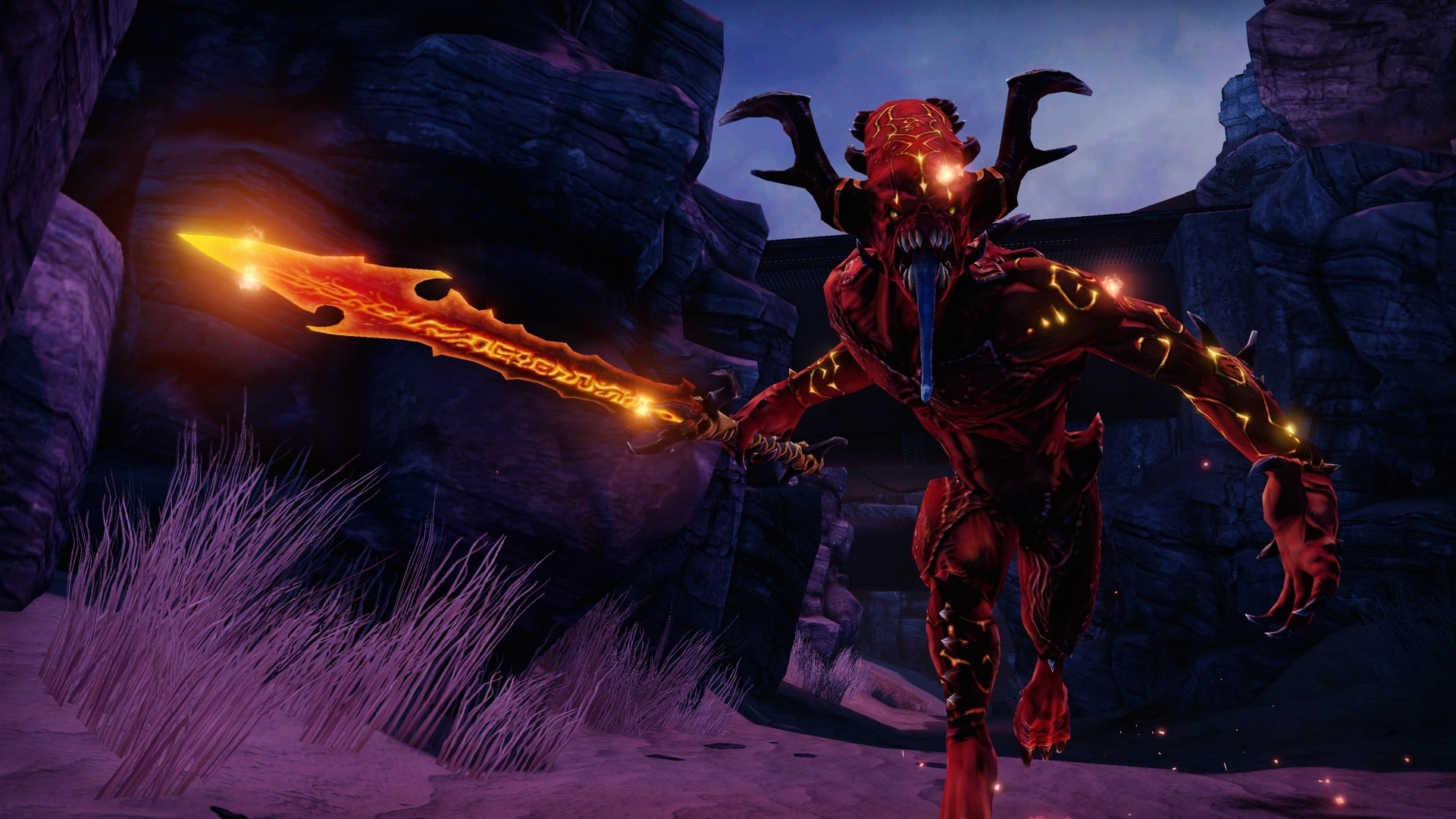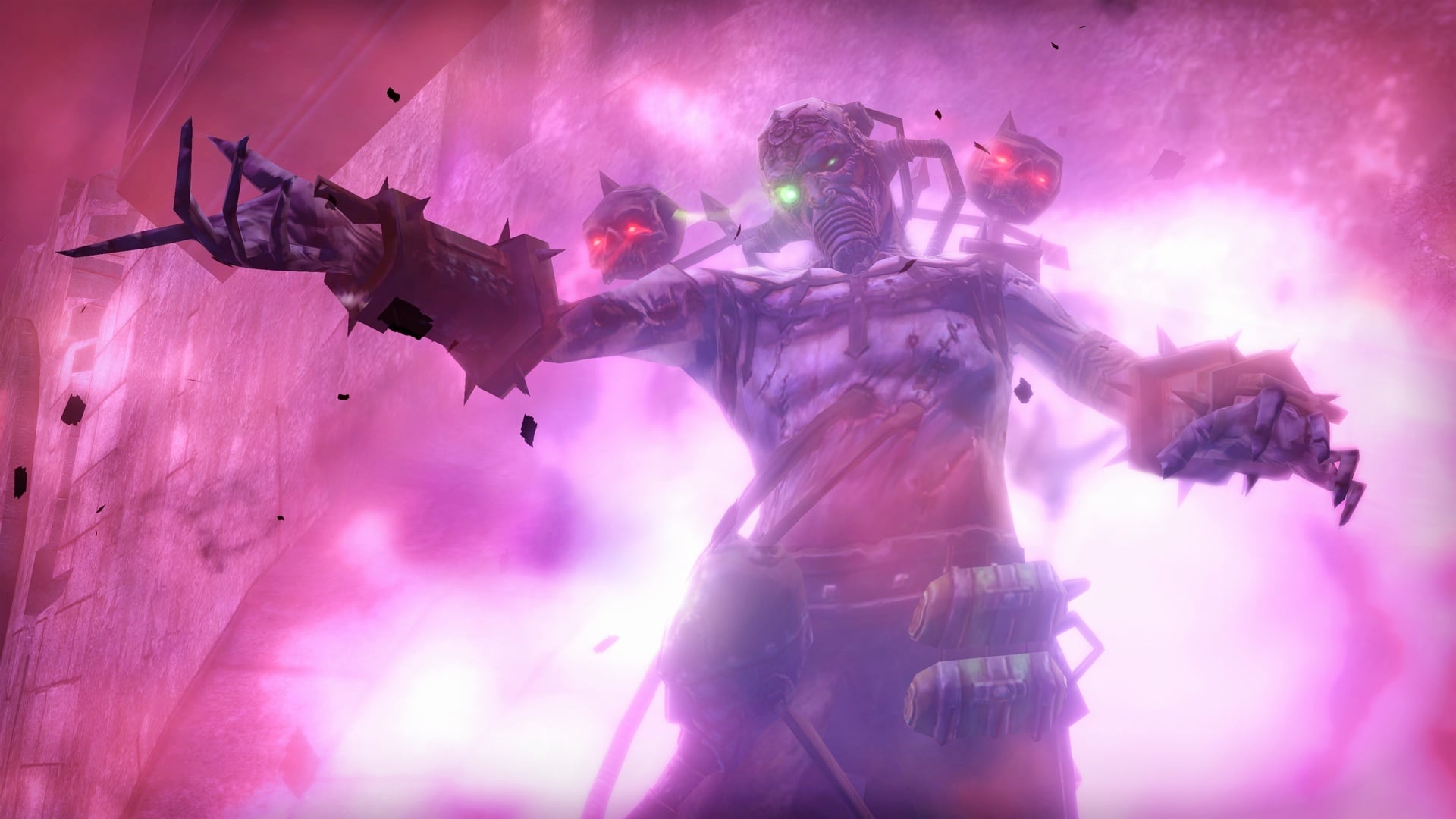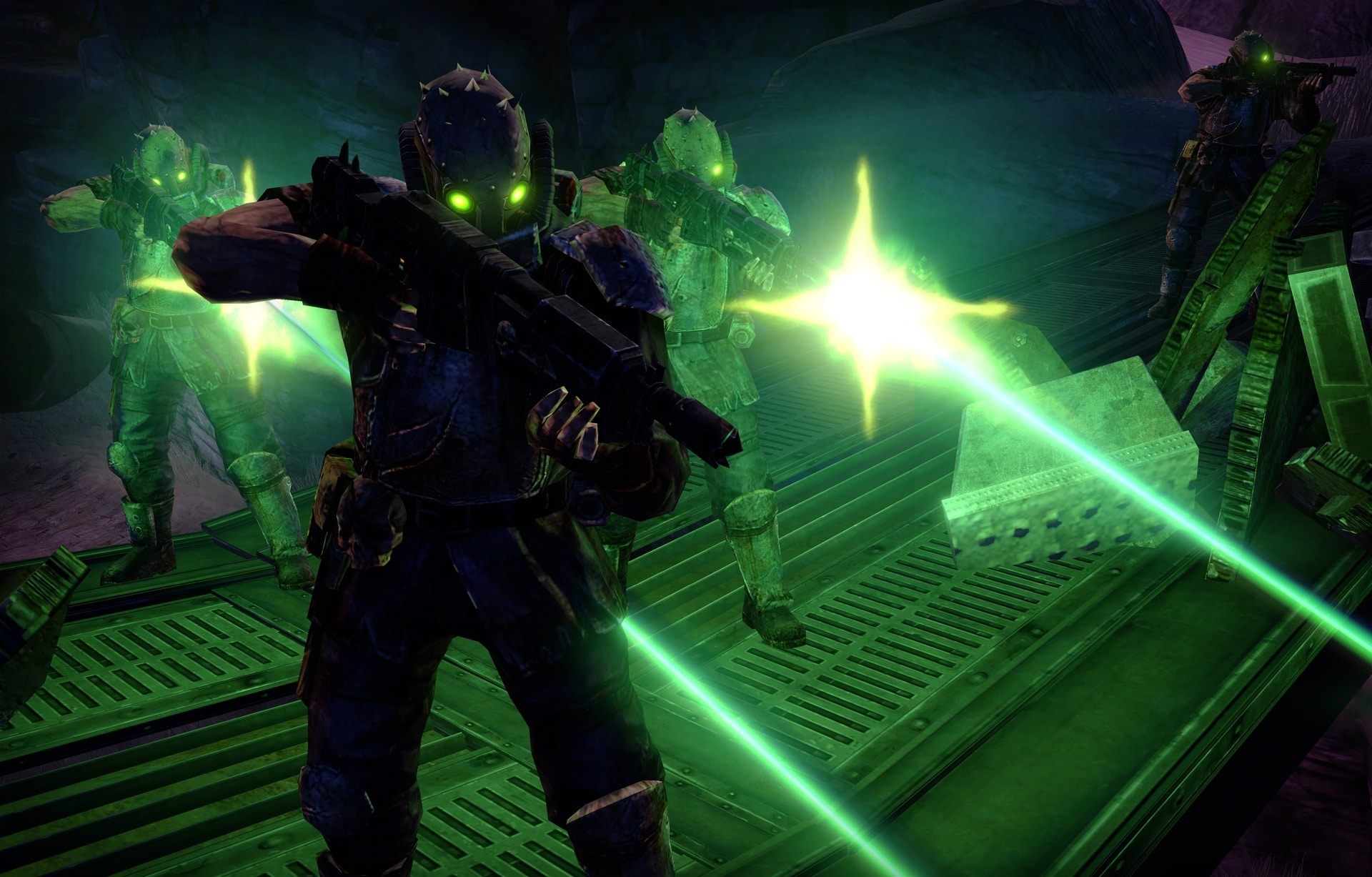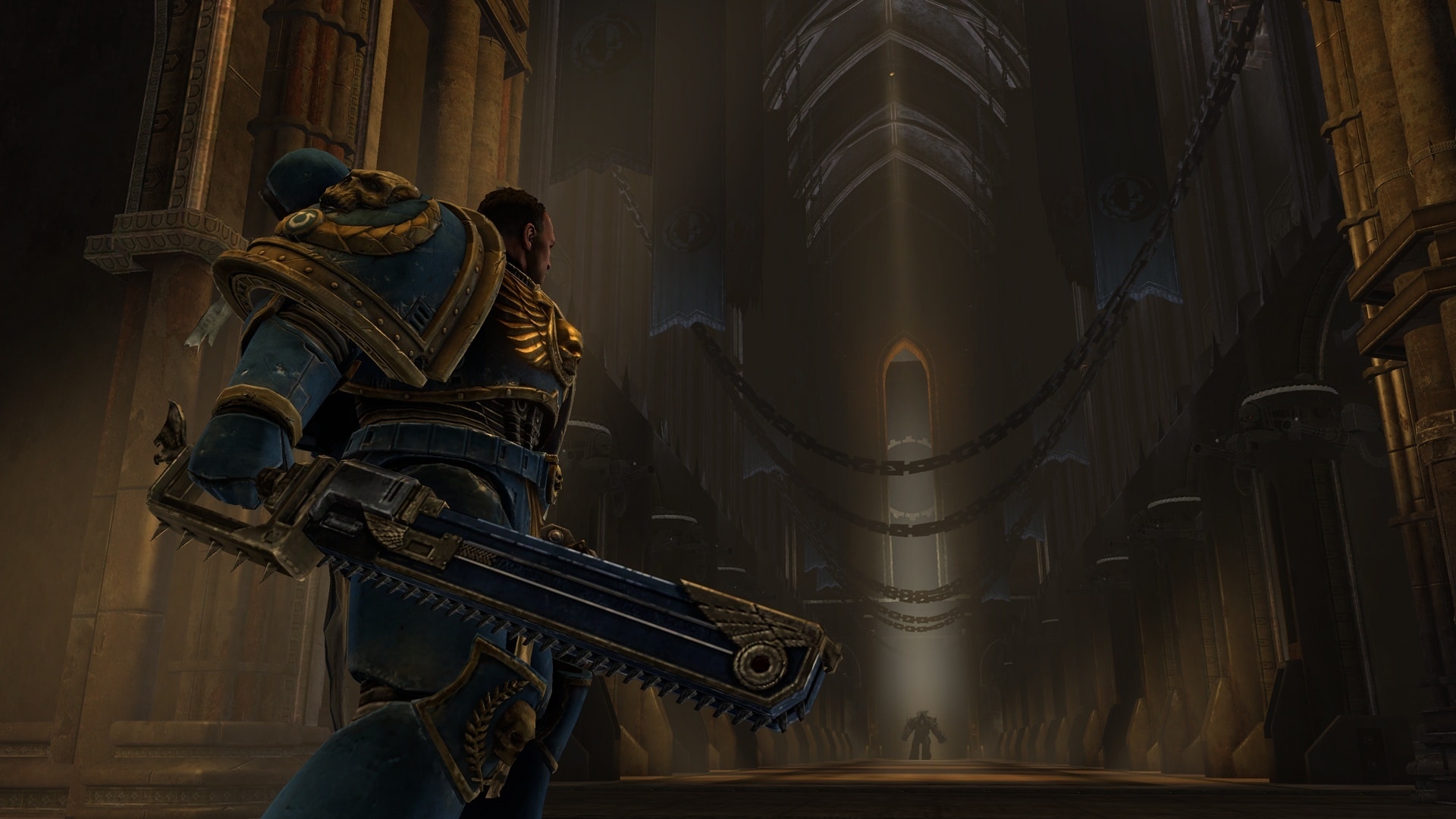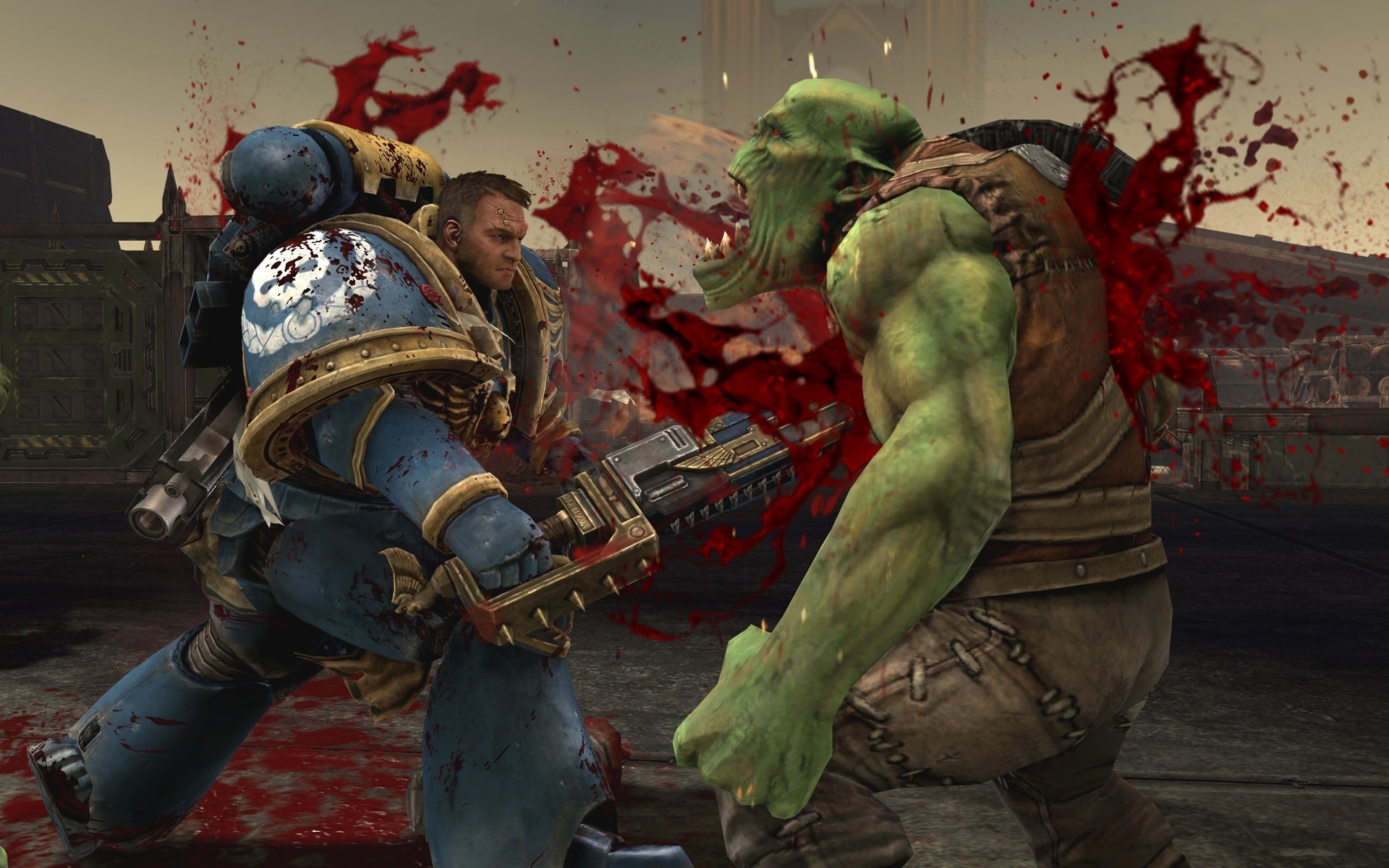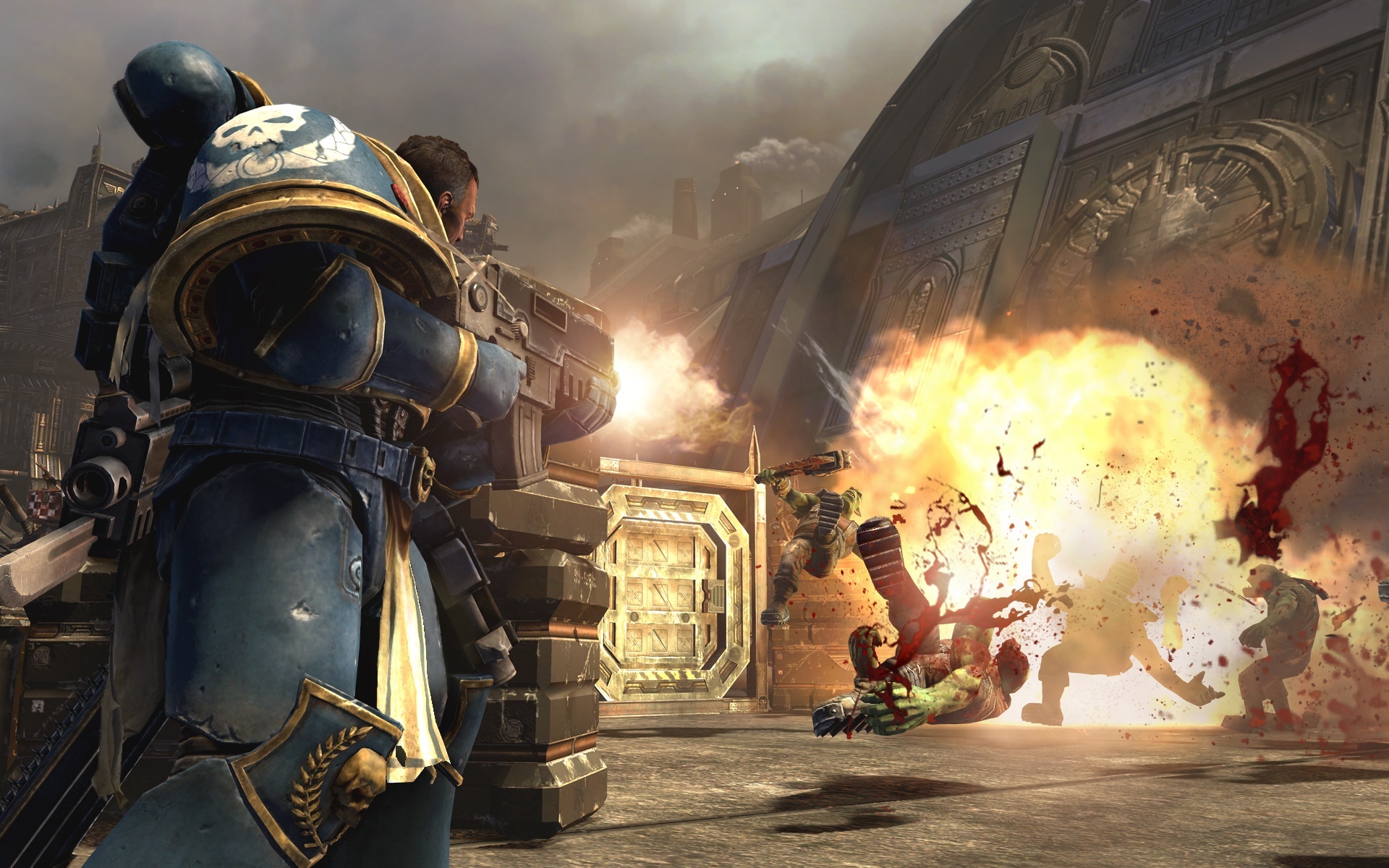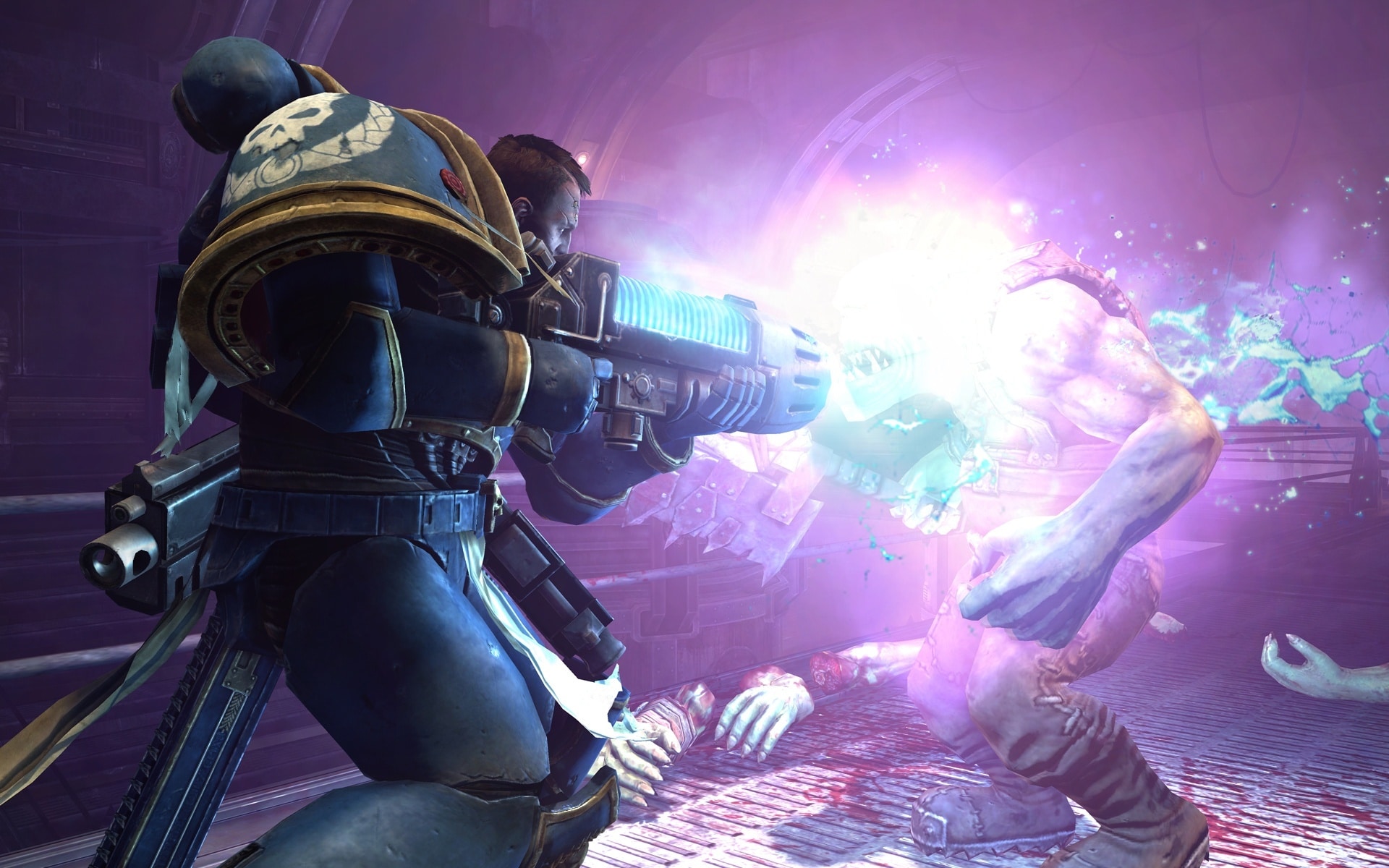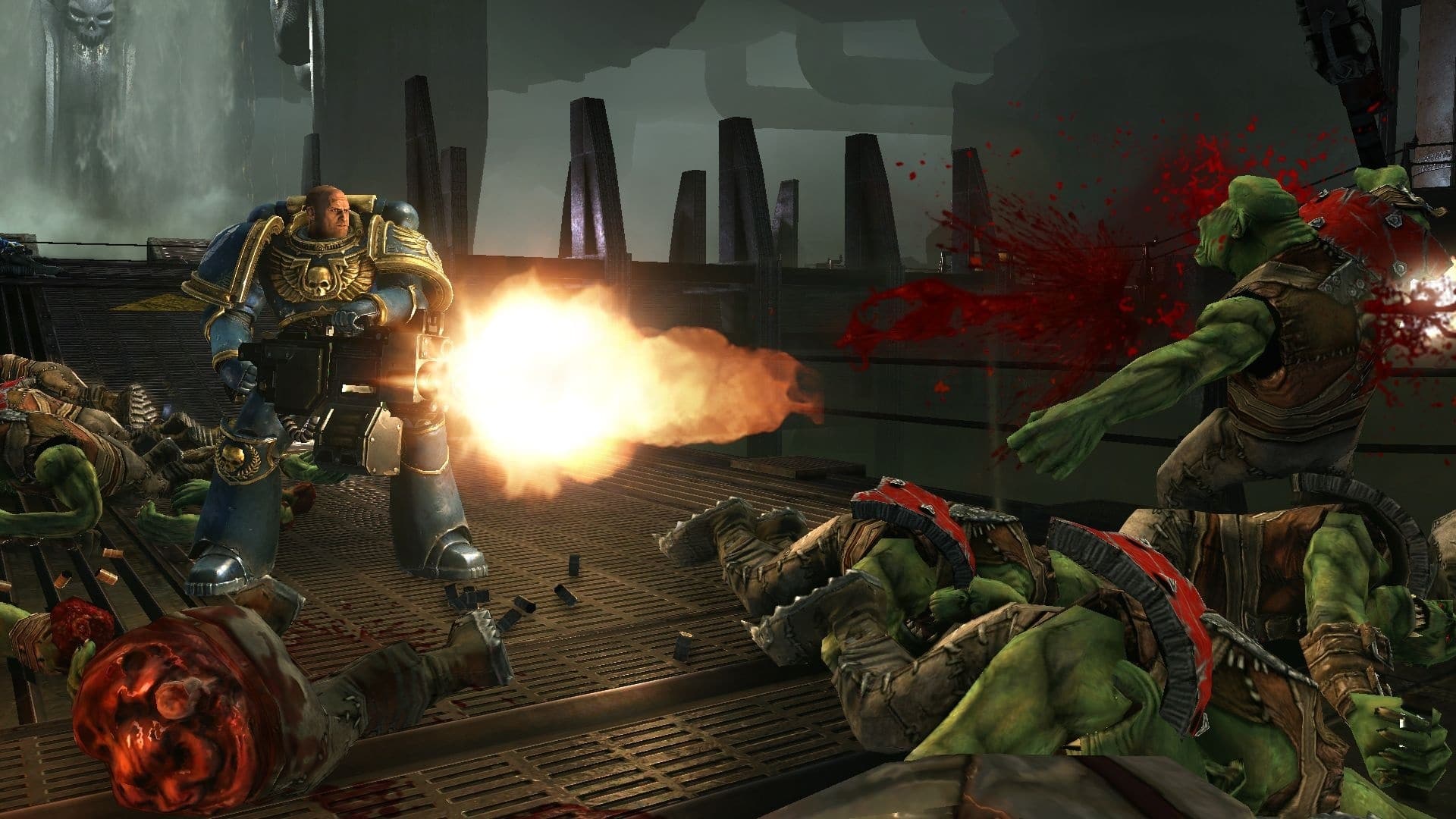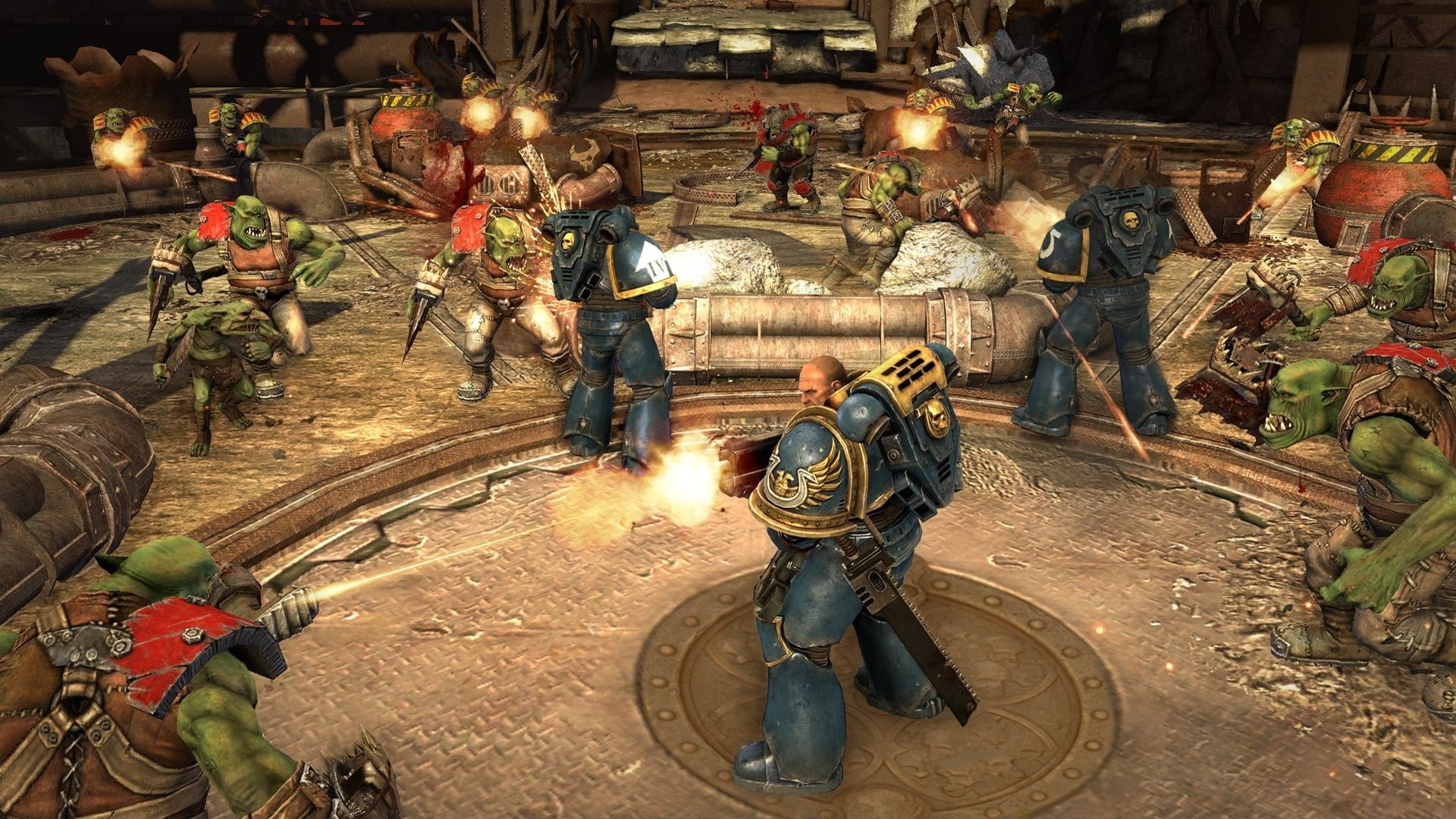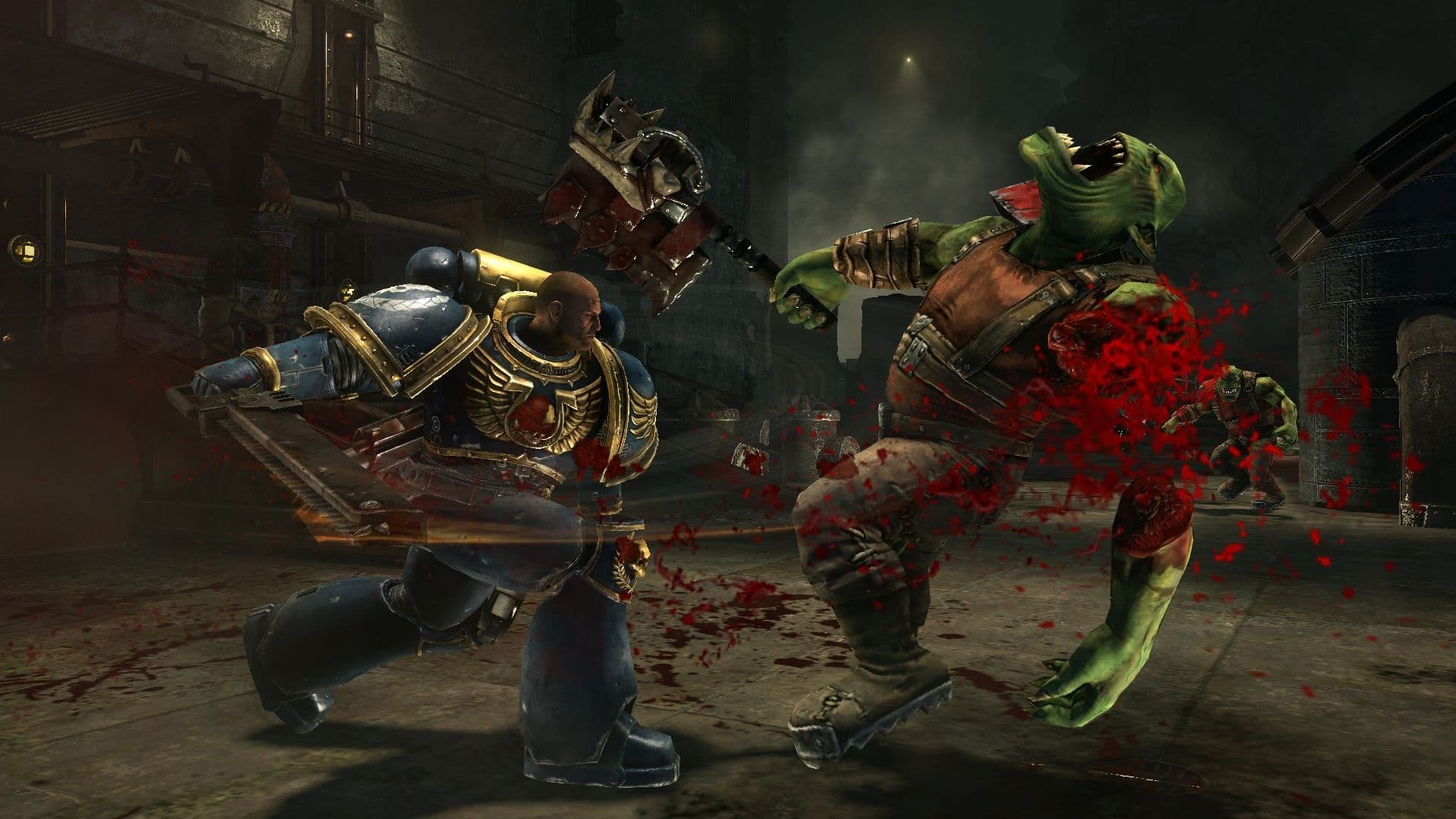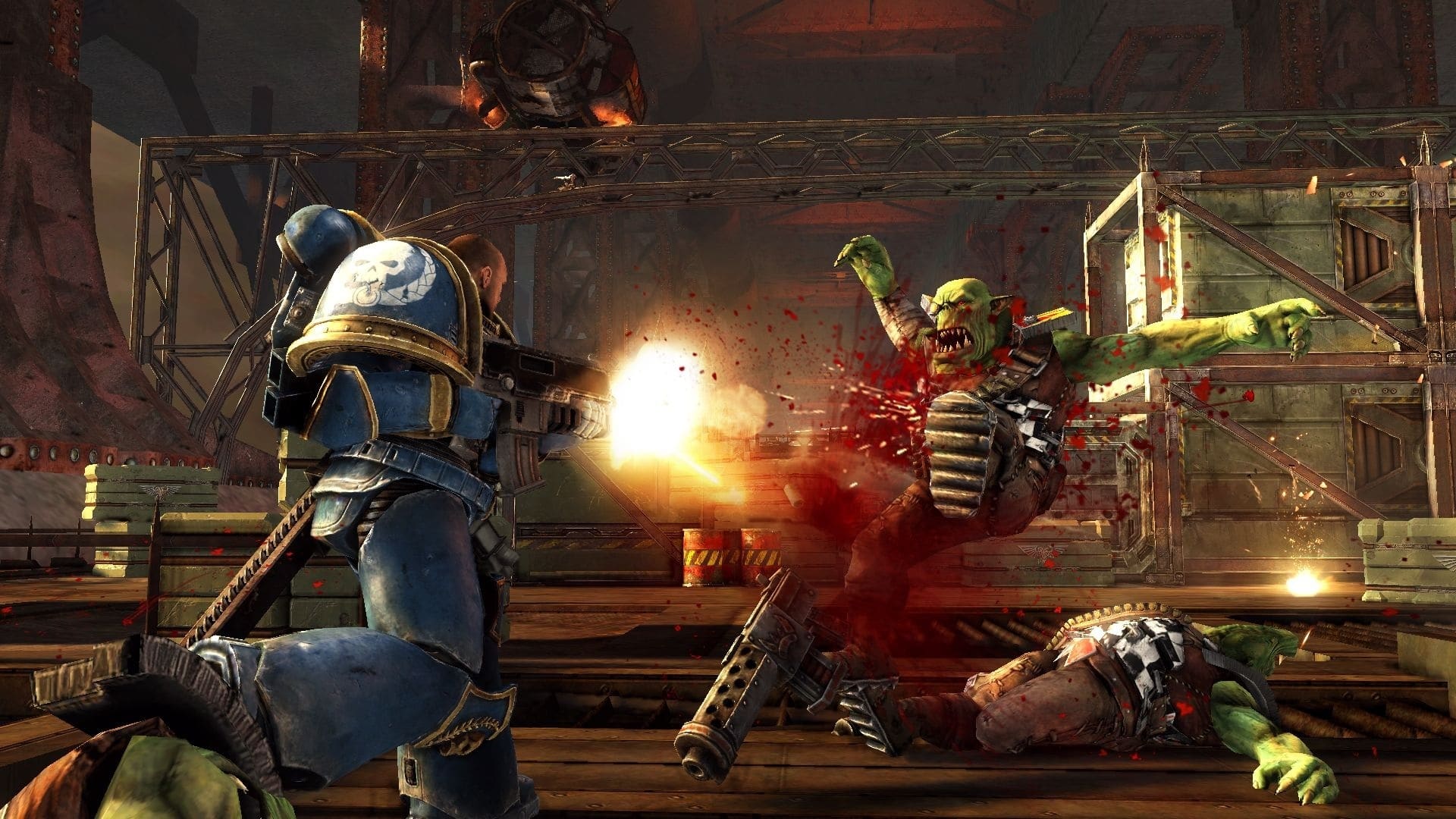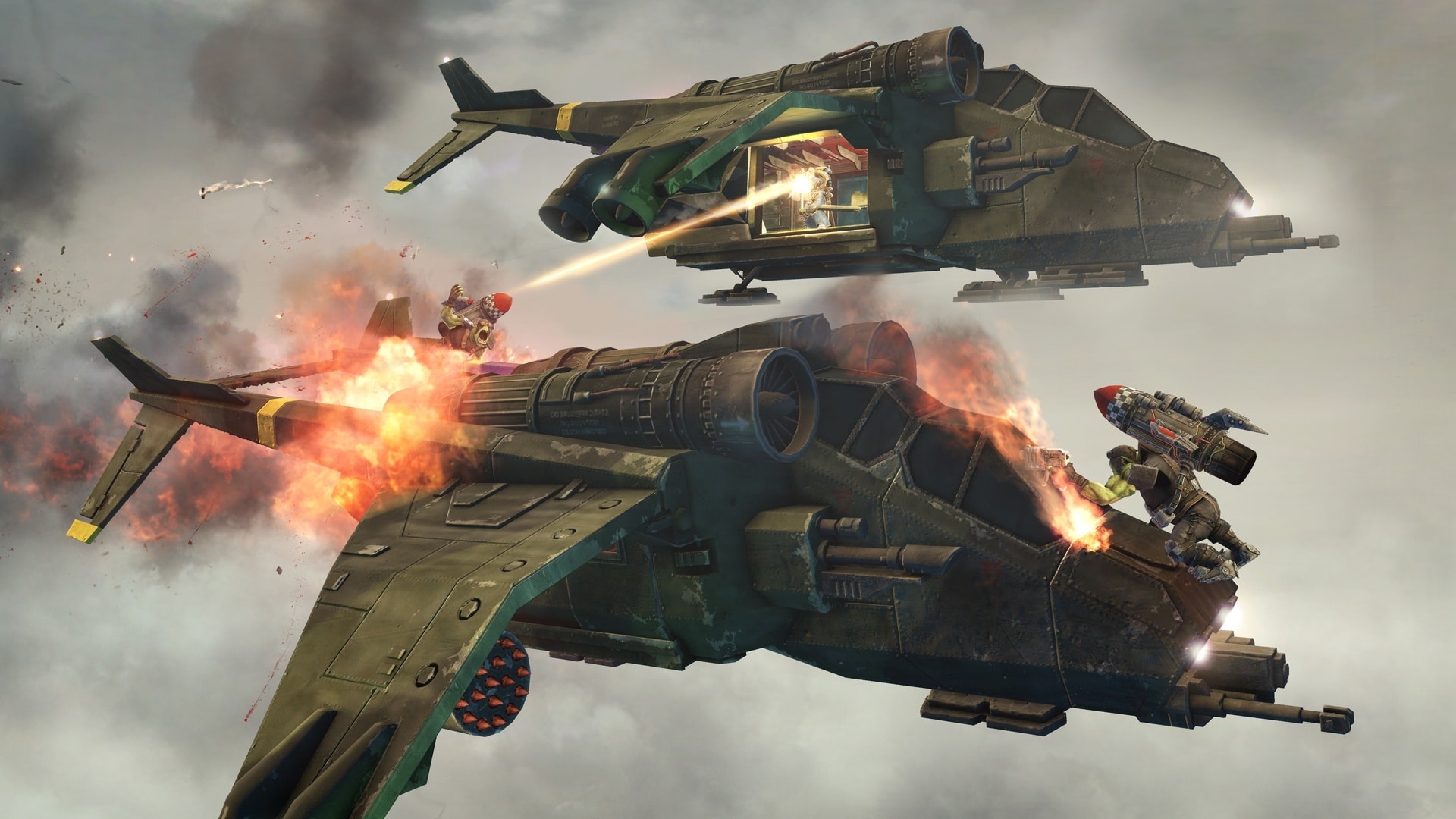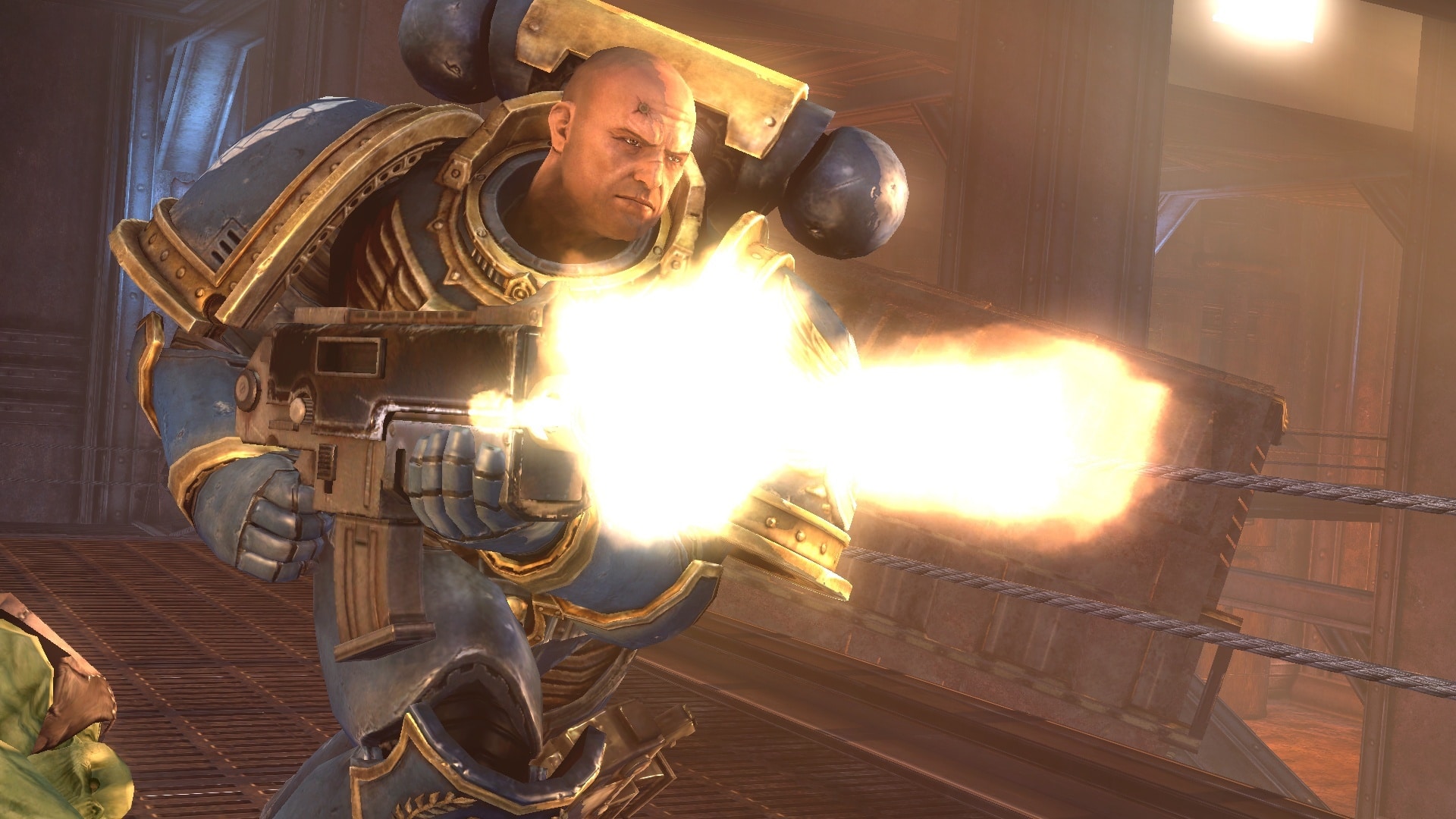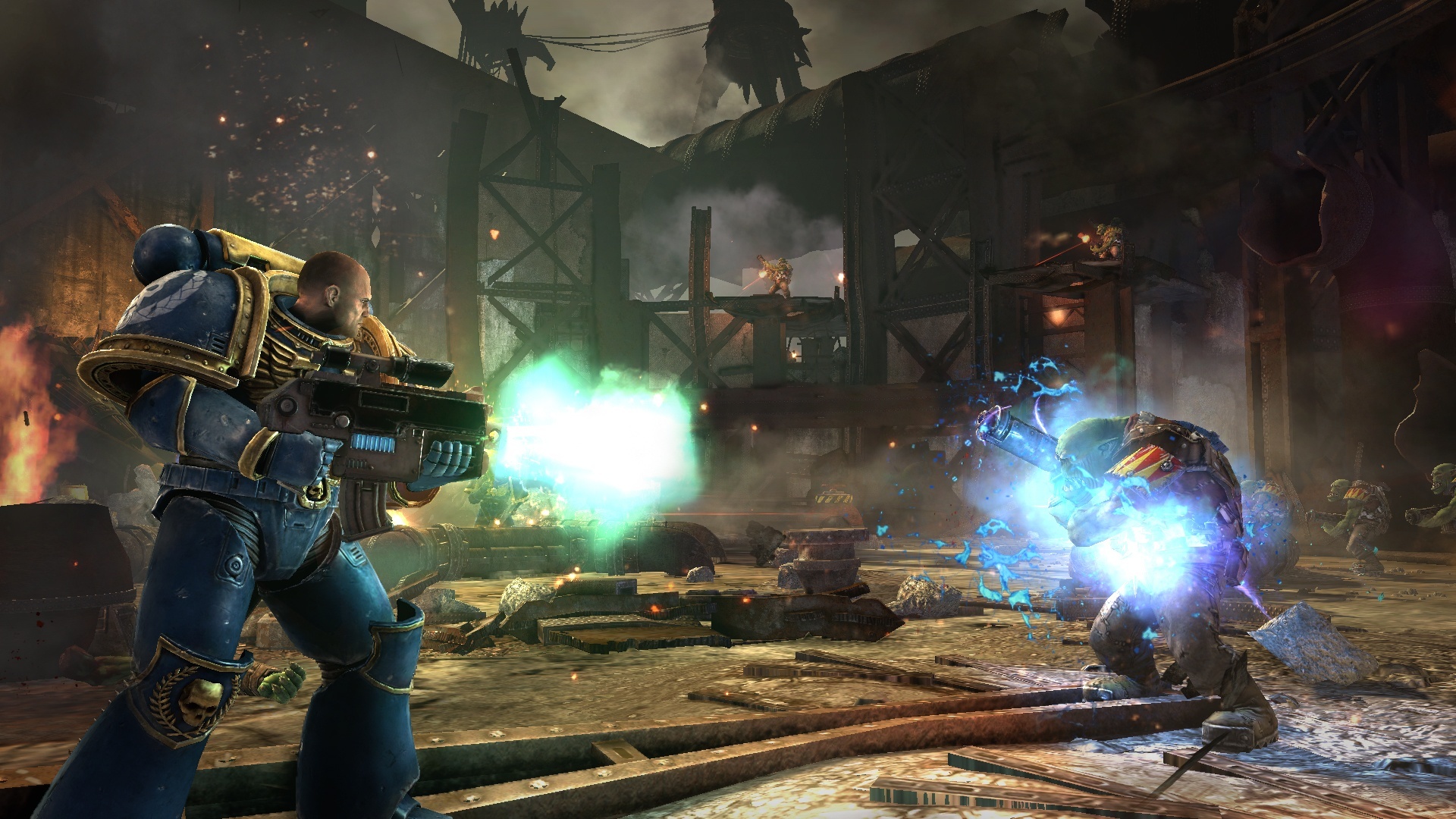With miniature mass battles, the success story of Warhammer 40.000 began over 30 years ago. Today, it is impossible to imagine the PC without the Space Marines.
With Warhammer 40,000: Chaos Gate – Daemonhunters, the latest offshoot of the Warhammer games will be released on 5 May 2022 and will once again take you into the brutal world of a distant, bitter future. However, each game only highlights a part of the varied science fiction setting of Warhammer 40k.
In this article, we take an extended look at the big picture, the Space Marines, and the game’s beginnings in the 1980s.
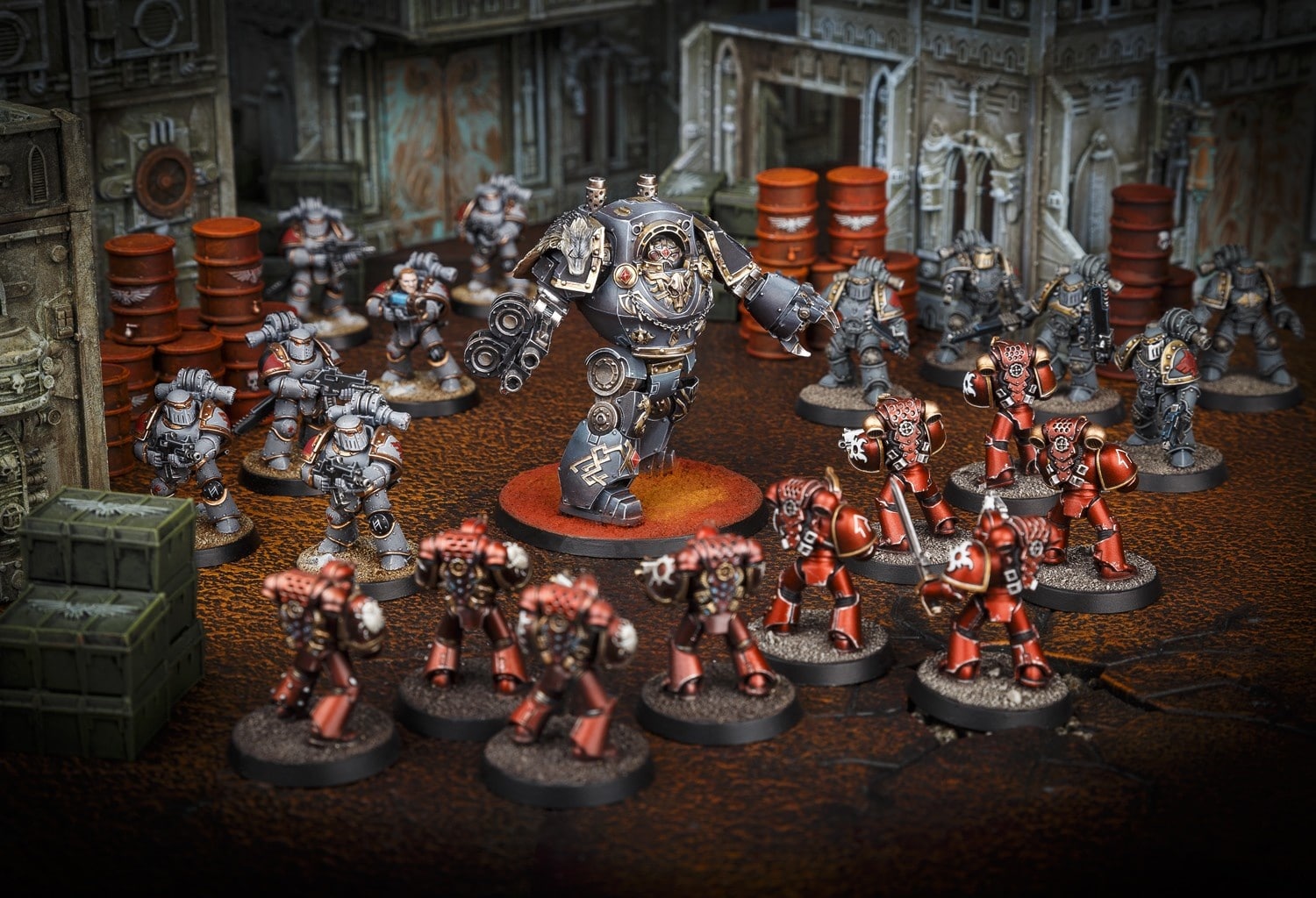
Table of Contents
Endless war without hope
Things look really bleak for humanity in the 41st millennium: The once radiant human empire, consisting of over a million worlds, is under attack from all sides. Its leader, the God-Emperor, lies locked in his throne on Terra as a slowly rotting corpse and can only prevent a major attack by demonic armies on the decaying empire through his magical psi powers. However, the Imperial army, made up of superhumanly strong Space Marines and squads of ordinary humans, is fighting on too many fronts at once.
On the battlefields of the future, they are up against a wide variety of chaos demons, battle-hungry orcs, elegant space elves, ravenous alien creatures and vengeful metal skeleton androids. It’s a pity that, in addition, a good part of the Space Marines mutinied against the Emperor during the Horus Heresy ten thousand years ago and were corrupted by Chaos, so that now, as mutated warriors, they are also pitted against their former comrades-in-arms.
Because of the ongoing, all-influencing war, there are no more socio-cultural developments and scientific advances, and human civilisation is close to collapse. In addition to the growing influence of the cults of evil gods, this is also due to the fact that many of the Empire’s planets have already been theatres of war for decades and have been destroyed accordingly.
On planets that have not yet been attacked, the population suffers from extreme war taxes and severely restricted civil liberties as governments seek to provide greater security. At the same time, the ecclesiarchy representing the faith in the God-Emperor tries to eradicate the influence of demonic cults and heretics on humanity through its Inquisition department.
In the face of so many threats, it quickly becomes clear: this eternal war cannot be won by the people. They can only try to hold out as long as possible so that the light of hope is not completely extinguished. Only violence helps, and lots of it! Consequently, all the games, books and the underlying Warhammer 40,000 tabletop game are primarily about war in many different facets.
Warhammer 40k for reading fans
A good introduction to the history and world of Warhammer 40,000 is offered by the “Horus Heresy” book series, which now comprises almost 60 books and is available in several anthologies, both digital and physical editions. But don’t let that put you off: even the first volumes provide a lot of background knowledge about the basic conflict of the game world, the Space Marines and the life of ordinary people in this hostile galaxy.
If you want something less epic, you can find exciting reading material about the adventures of the eponymous Inquisitor in Dan Abnett’s “Eisenhorn” book series. Also recommended is Abnett’s “Gaunt’s Ghosts” book series, in which you follow a detachment of the Imperial Army under the leadership of Commissioner-Colonel Ibram Gaunt.
Success story from the 1980s
With small figures and a lot of war on the table, the Warhammer success story began in 1983, when game designers Bryan Ansell, Richard Halliwell and Rick Priestley launched the first edition of the tabletop game “Warhammer: The Mass Combat Fantasy Role-Playing Game” for the Games Workshop company in England.
In it, human knights, various elven races, orcs, lizardmen, the rat-like skaven, dwarves and other classic fantasy creatures fought each other in great battles on a world modelled on the real Earth, with weapons inspired by the Middle Ages and early Renaissance and, of course, lots of magic.
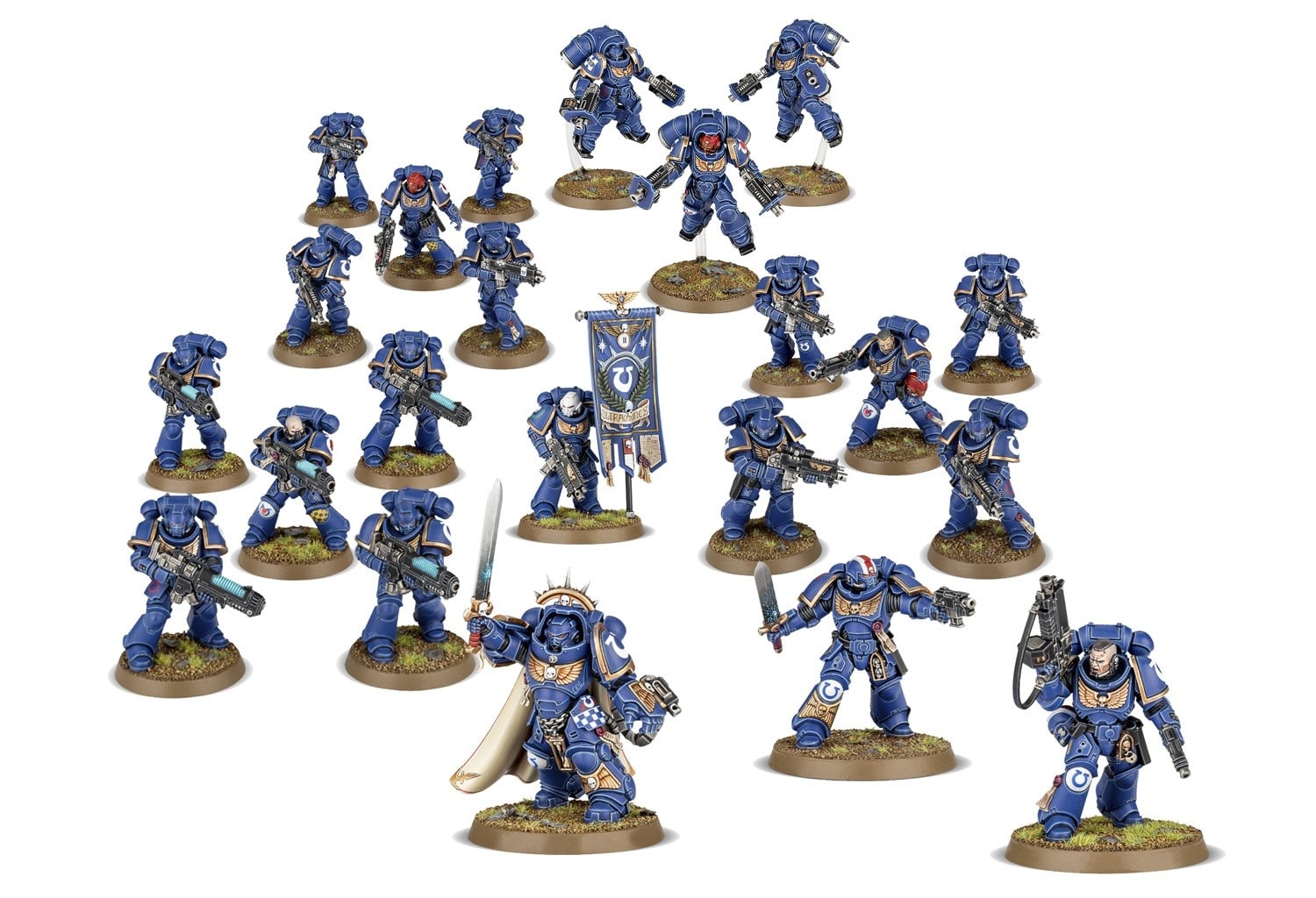
In 1987 Games Workshop ventured into the sci-fi genre and published the game system “Warhammer 40,000: Rogue Trader”. Its rulebook focused more than the fantasy version on small skirmishes determined by environmental effects, special abilities and additional equipment and contained more role-playing elements. However, these were already reduced in the second edition from 1993 in order to focus more on combat content.
Finally, with the third edition for Warhammer 40,000, released in 1998, the rules were greatly changed and simplified to allow for larger battles. Since 25 July 2020, the ninth edition of Warhammer 40,000 has already been on the market, while the significantly lower-selling Warhammer Fantasy was discontinued in July 2015 and replaced by the product successor “Warhammer: Age of Sigmar” with more flexible, simpler rules and visually more appealing models. However, the change was unpopular with oldschool fans.
From the gaming table to the PC
Different games set in the same world as Warhammer 40,000 add variety to the action: For example, in the macropolises of the futuristic, dystopian planet “Necromunda” you go into battle with a maximum of nine gang members. You improve them by gaining experience points in battles, and you also conquer resources, equipment and territories for your chosen gang. In this way, a longer, dynamic story develops from battle to battle.
In the “Gorkamorka” scenario, which has been discontinued in the meantime, you race through a desert world as rival orcs on crazy carts and defend forts, collect scrap metal, exchange prisoners and explore the mysteries of the world.
In addition, with “Free Traders”, “Shadow Hunters” and others, there are various tabletop role-playing game rulebooks that let you slip into the role of free spaceship captains and their crew, Inquisitors and their entourage, Space Marines, Imperial soldiers or Chaos followers.
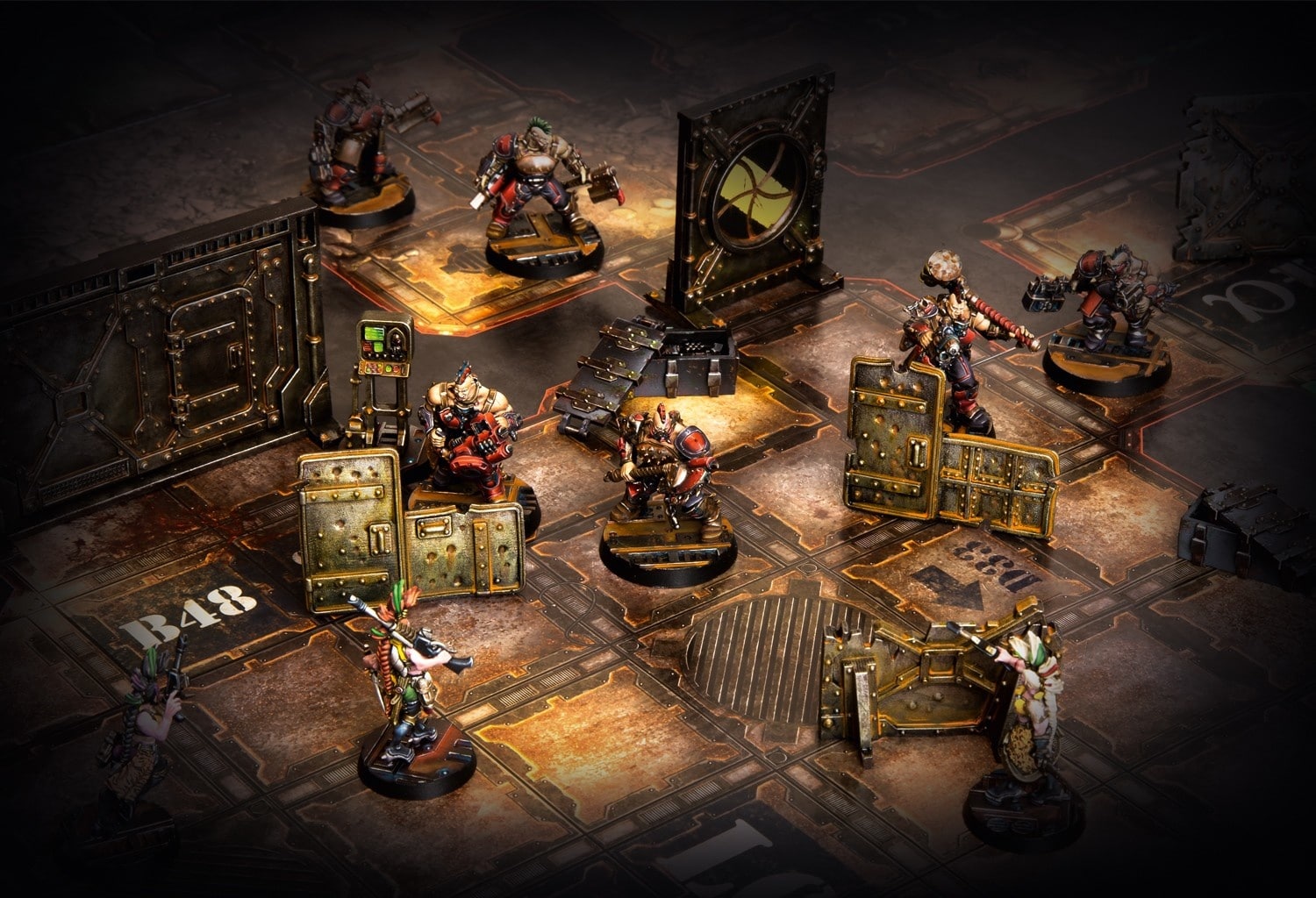
Board games such as “Space Crusade”, “Space Hulk” or the collectible card game “Dark Millennium” were intended to make Warhammer accessible to other groups of players, but had rather mixed success. The computer and mobile phone games set in the Warhammer universe were much more popular.
So far, 31 games have been published for Warhammer Fantasy, plus seven Age of Sigmar games and a whole sixty titles (including DLCs) for Warhammer 40,000. The selection ranges from an MMORPG (which has since been discontinued) to hard-hitting shooters and real-time strategy with space battles – Warhammer 40,000: Chaos Gate – Daemonhunters is one of the turn-based strategy games in the XCOM style.
Battlefield: dining table!
What do you actually do in a tabletop game? This version of Warhammer is played on a free surface, usually a wide tabletop – hence the name of the genre. Large armies in particular need a lot of space when spells and area attacks symbolised by cardboard discs and extensive troop movements are added to the mix.
The tabletop is shaped into an individual battlefield by terrain objects such as buildings, ruins, groups of trees and printed underlay mats with different types of ground. Ground effects and different cover options further increase the tactical demands of the battles. Since very few players have so much space at home, Games Workshop shops regularly hold tournament evenings after closing time, to which fans can bring their armies.
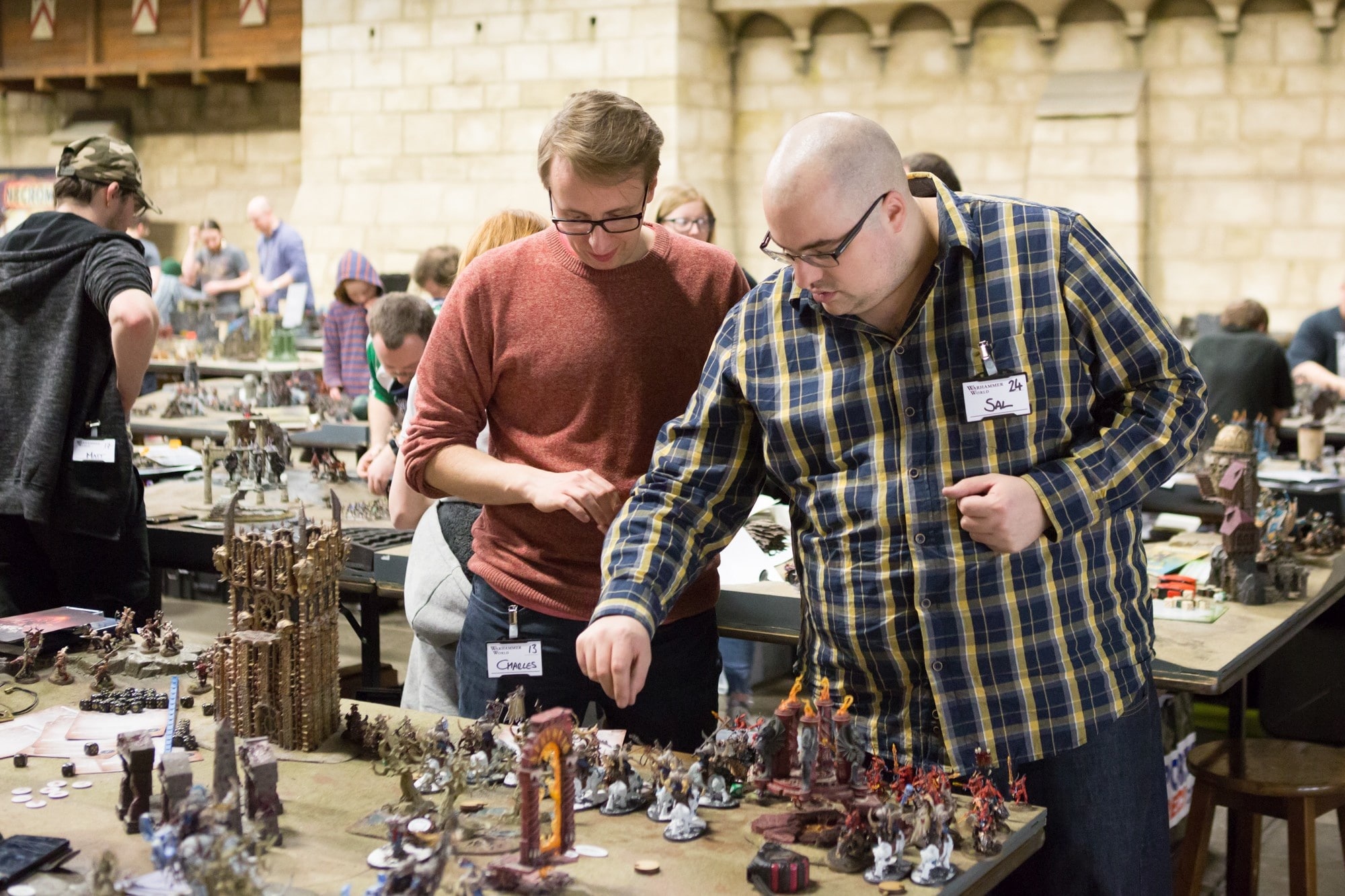
Generally, in a round of Warhammer Fantasy or 40,000, two or more players compete against each other with their armies consisting of miniatures they have painted themselves and try to achieve agreed battle objectives. These may consist of sweeping the opposing army off the table, conquering (and holding) a specific location on the playing surface, or even just eliminating an important model from the other army. Some even organise tournaments with their human knights from the Breton people with specially invented rules!
The size of the army and thus the amount of models used is limited by the maximum point value agreed upon by all participants before a battle and the formation of the armies. Each model corresponds to a point value determined by equipment, skills, learned spells and combat strength. For example, armies with an extremely large number of weak fighters are possible, who use their sheer mass as an advantage and simply overrun their opponents.
Alternatively, you can rely on highly specialised small groups consisting of powerful models, where every failure has noticeable consequences. More common, however, is a balanced mix of a few strong leaders with a manageable amount of normal fighters. Combat moves are made in turn, during which the players move their armies around the board, cast spells or announce special effects – until one side has won.
However, the Warhammer hobby does not live from fighting together alone: for many, the “before” by painting the figures and building the terrain pieces is just as important or even more important than a battle that follows.
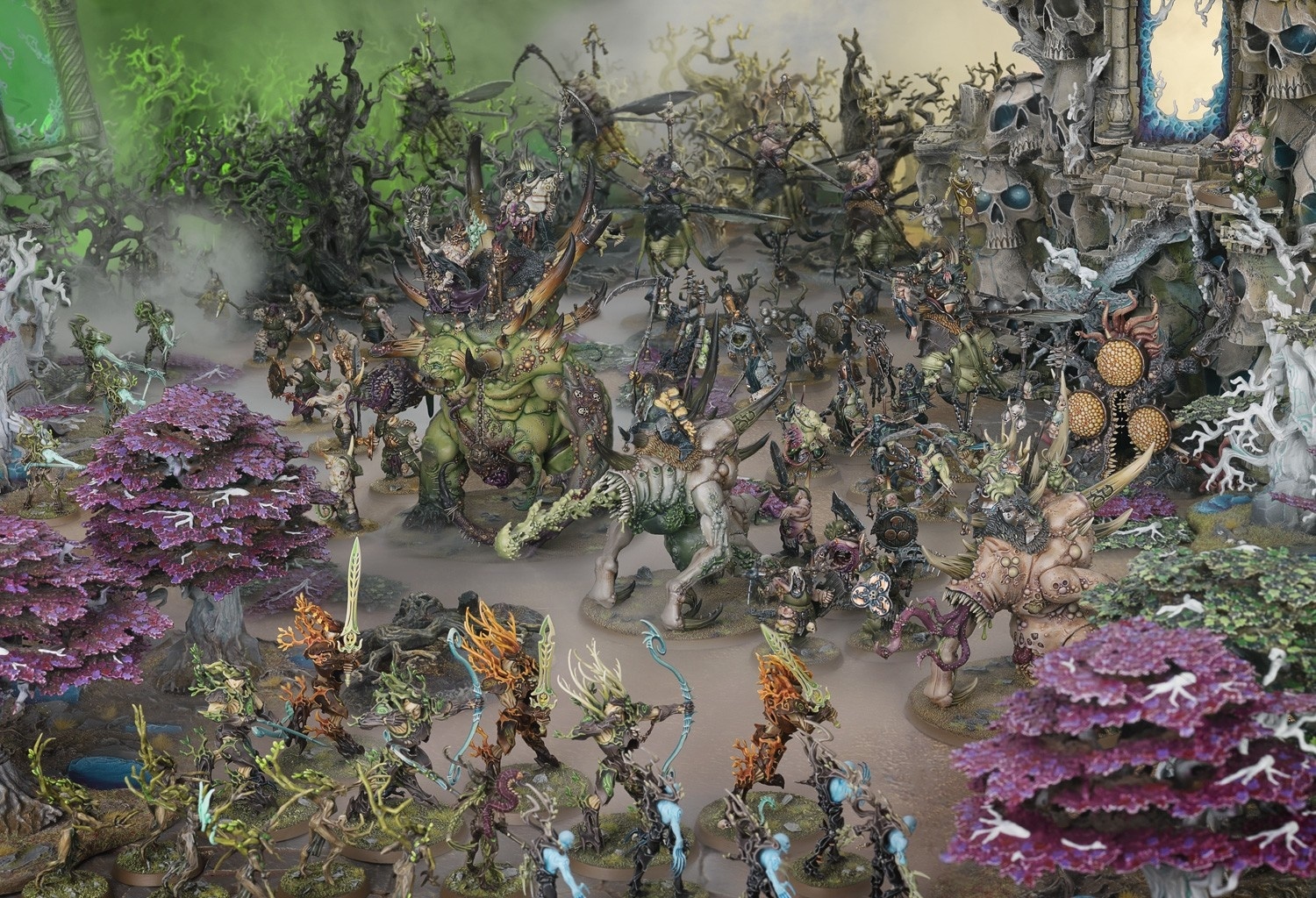
Both on Twitch and on YouTube, there is an active community where painting and building tips are taught through tutorials and livestreams or you can watch particularly talented artists create elaborate miniatures. Artists use the hashtag paintingwarhammer to mark their current work on Instagram. Games Workshop also organises annual painting competitions in which the best painting works are awarded and presented in the monthly Warhammer hobby magazine “White Dwarf”.
Dark, gloomy, grimdark
With the slogan “In the grim darkness of the far future there is only war.” (“In the darkness of the far future there is no peace.”) Warhammer 40,000 is still advertised today. This pessimistic, bleak and gloomy design of the game world set in an alternative future of Earth decisively shaped the genre term “grimdark” at the end of the 1990s, in whose scenarios no one acts honourably and only the law of the strongest applies.
George R. R. Martin’s fantasy book series “A Song of Ice and Fire”, which was filmed as the TV series “Game of Thrones”, is one of the internationally best-known representatives of the genre, as is Christopher Nolan’s “Batman” film trilogy.
Superheroes of the Future
While we’re on the subject of war: In the far future, the one on the side of the humans is fought mainly with simple infantry, combat vehicles, mechs called “Titans” and the various Space Marine legions. But what is it about the Space Marines?
Once bred for a campaign of conquest by the Emperor, the all-male warriors of the Adeptus Astartes are pimped into genetically modified super-warriors through the implantation of an additional organ with special gene seeds. Incidentally, it was the ordinary Imperial citizens who first called the Astartes Space Marines.
With an average height of between 2.10 and 2.30 metres, servo armour jacks implanted in their skin, a pungent ammonia-based body odour, extreme musculature and elongated facial features, Space Marines are unmistakable among ordinary humans.
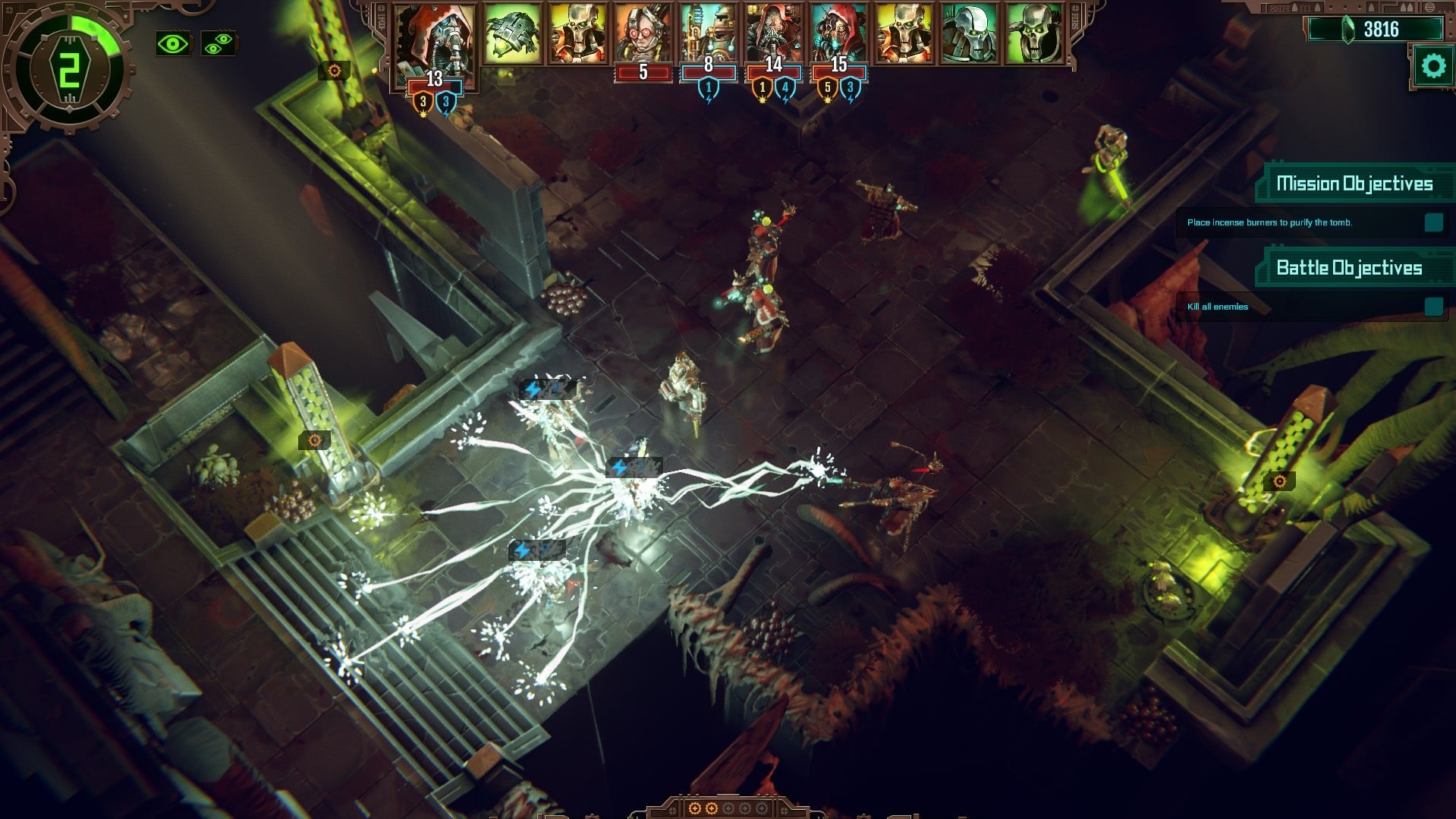
Astartes blood can filter most toxins, and super warriors heal injuries many times faster than ordinary people and have improved reflexes. These are the best prerequisites for surviving even the toughest battles! If an enemy fails to kill an Astartes, they are immortal due to their genetic manipulation – neither ageing nor disease can harm them. After death, the Apothecarii, the Space Marines’ medics, extract the genetic seed from fallen warriors so that new Space Marines can be bred from it.
Superhuman or inhuman?
Compared to normal humans, the lives of Astartes are focused exclusively on what benefits them in battle: Their way of life corresponds to the well-organised daily routine of battle monks, the individual warriors regard each other as brothers, including benevolent sibling rivalry, through which they drive each other to better performance. Through their discipline, Space Marines largely ignore disturbing sensations such as fear, they are also very proud of their abilities and their strong self-confidence rarely makes them despair even in the most difficult situation.
On the other hand, their sex drive has been largely bred out of them and is only expressed in the desire to see their own genetic seed passed on in the creation of new Space Marines. Although various books repeatedly describe them as being attractive to women and becoming the target of flirtations, Astartes cannot handle this kind of social behaviour and react at most with a certain protective instinct.
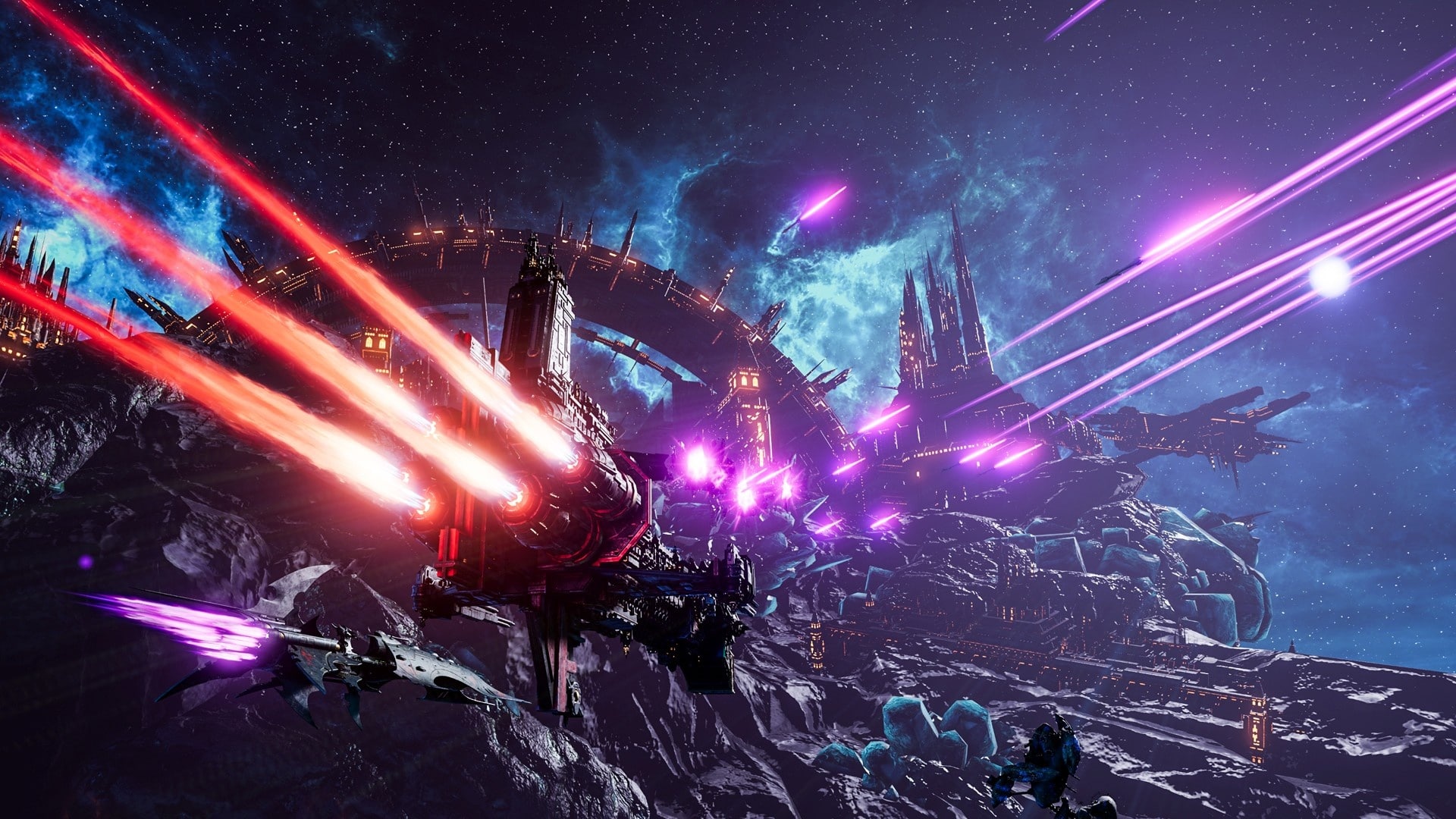
Each order has its own colour scheme and virtues that the warriors particularly emulate in battle, in addition to a leader called Primarch who is unequally bred for strength. The respected Ultramarines, for example, strive to implement the tactics taught in the Codex Astartes particularly effectively and to fight in a disciplined manner. The Iron Hands act particularly logically and despise the weakness of the flesh; many of their warriors also replace uninjured body parts with bionics in order to perfect themselves. Space Wolves seek glory in battle above all else and display a particularly savage and aggressive fighting style – and so on.
With knights against demons
Among the fourteen Empire-loyal Space Marine orders currently in the game world, the Grey Knights, with whom you set out in Warhammer 40,000: Chaos Gate – Daemonhunters, are a true exception.
While normal Space Marines can be corrupted by the whispers of the forces of Chaos, the Grey Knights were bred from the genetic material of particularly resistant Legionnaires. Since they are all latent psionics, they are given a mental shield during their creation that makes them uncorruptible to Chaos. For as strong as Astartes are in battle, it is their pride and battle rage that make them vulnerable to the influence of dark forces.
Grey Knights serve the God-Emperor exclusively as demon hunters acting in secret and use special weapons in battle. In Daemonhunters you will use psi swords, lances, hammers and the psionically shielded Aegis armour, which is only available to Grey Knights, on which purity seals, meaning spells and protective runes are supposed to support the wearer in the fight against warp beings. The best prerequisites for really wiping the floor with the nasty demon breed – you can try out how well you do as the leader of a Grey Knights group from 5 May 2022.

